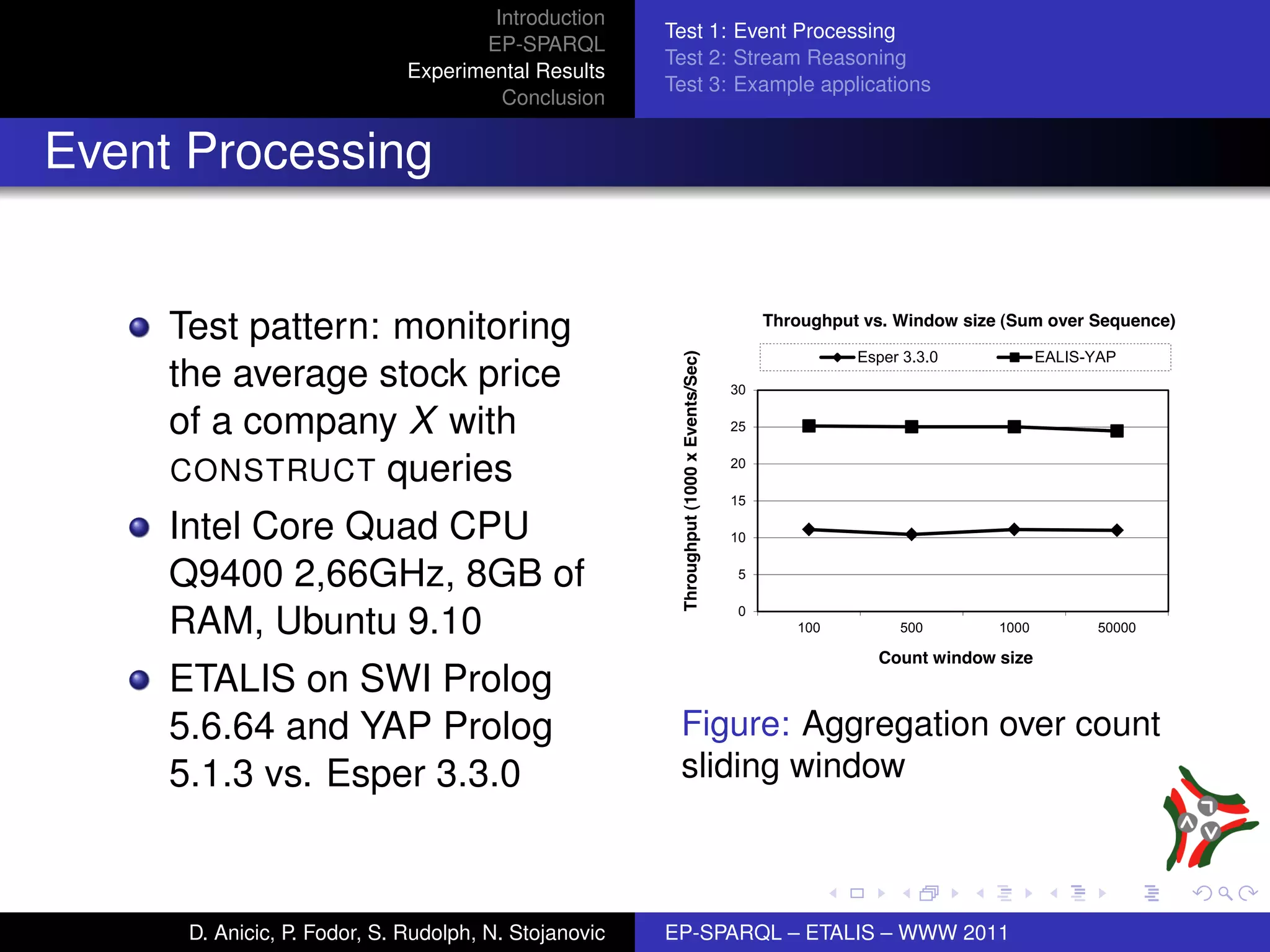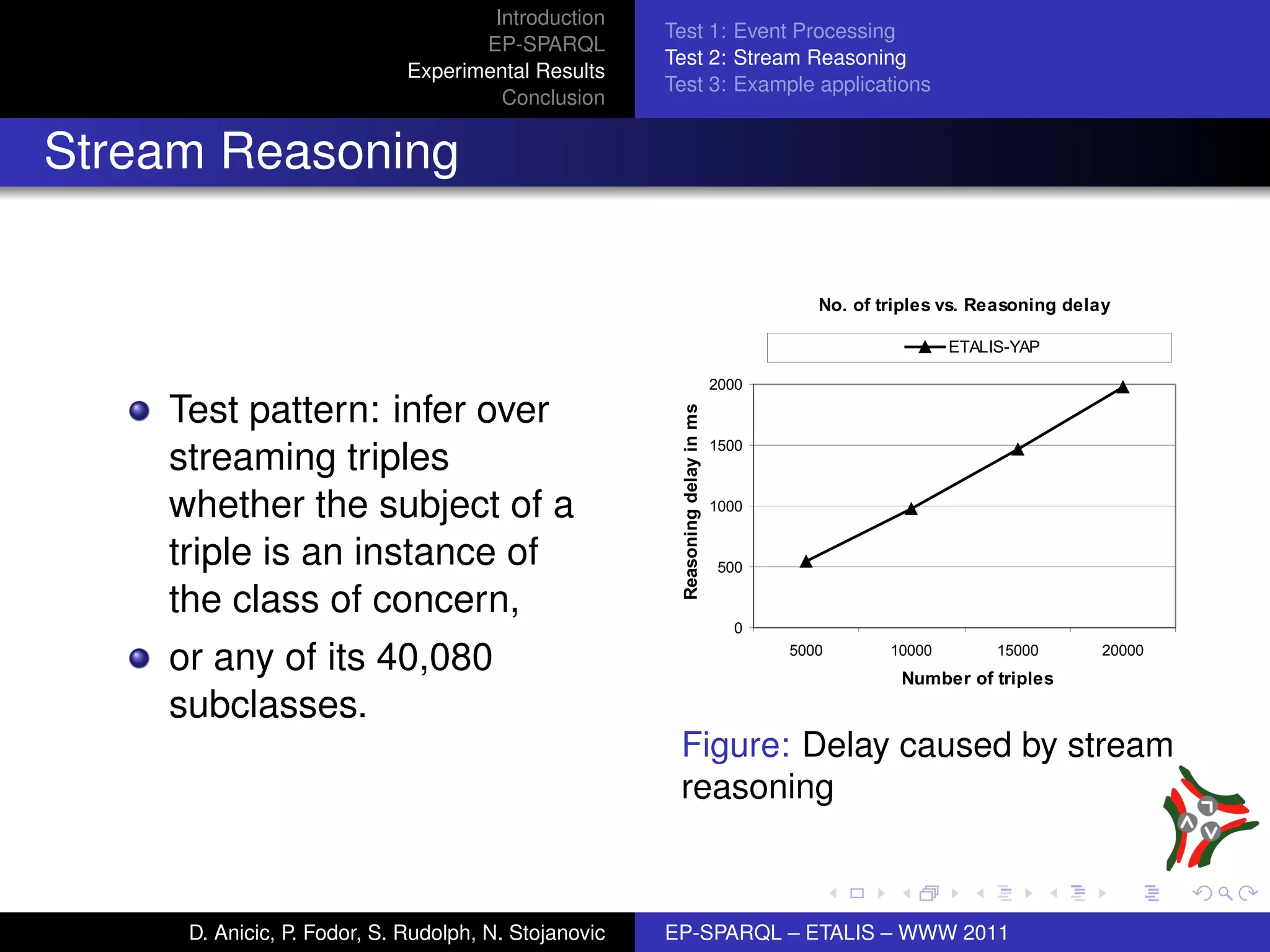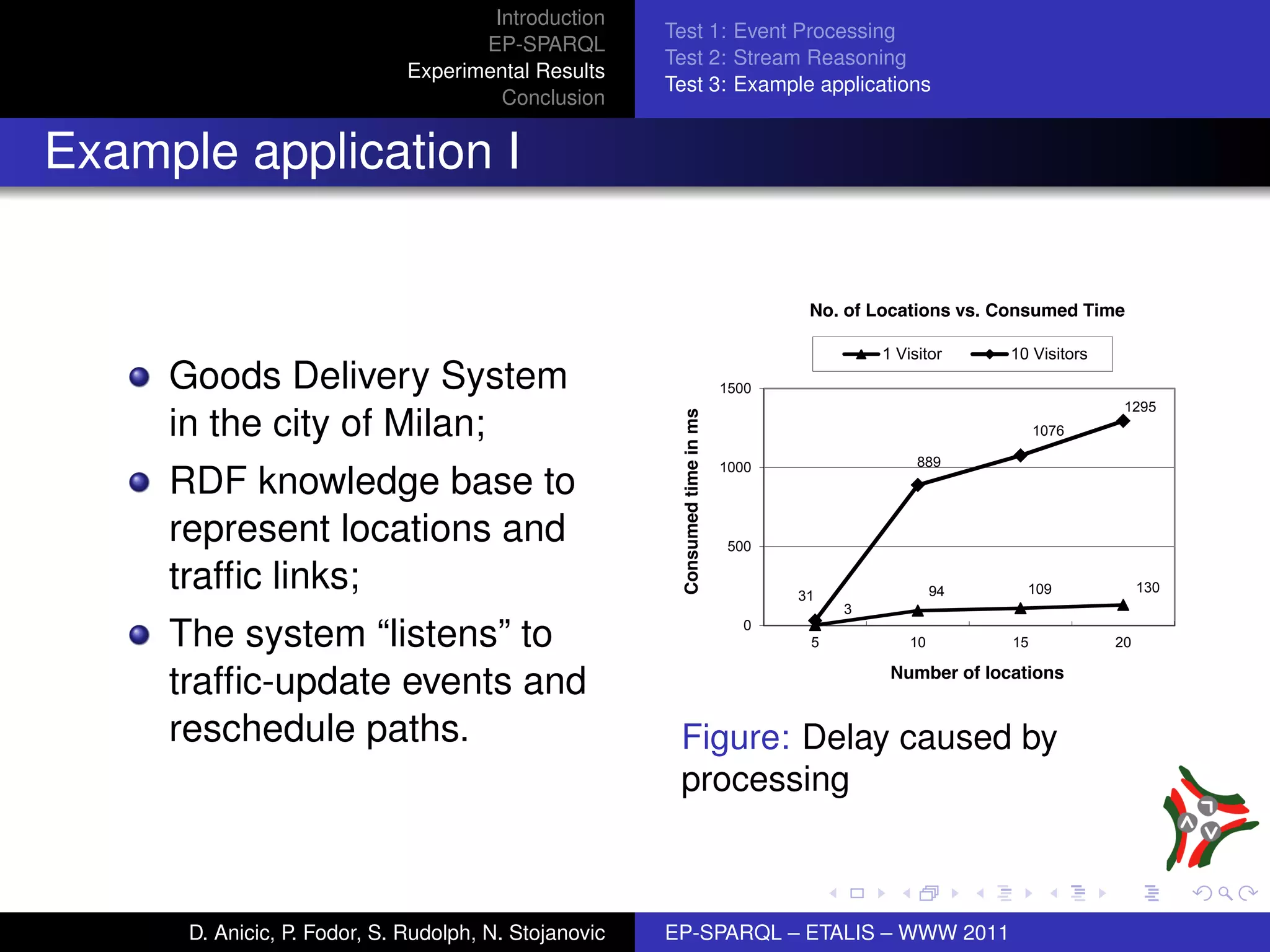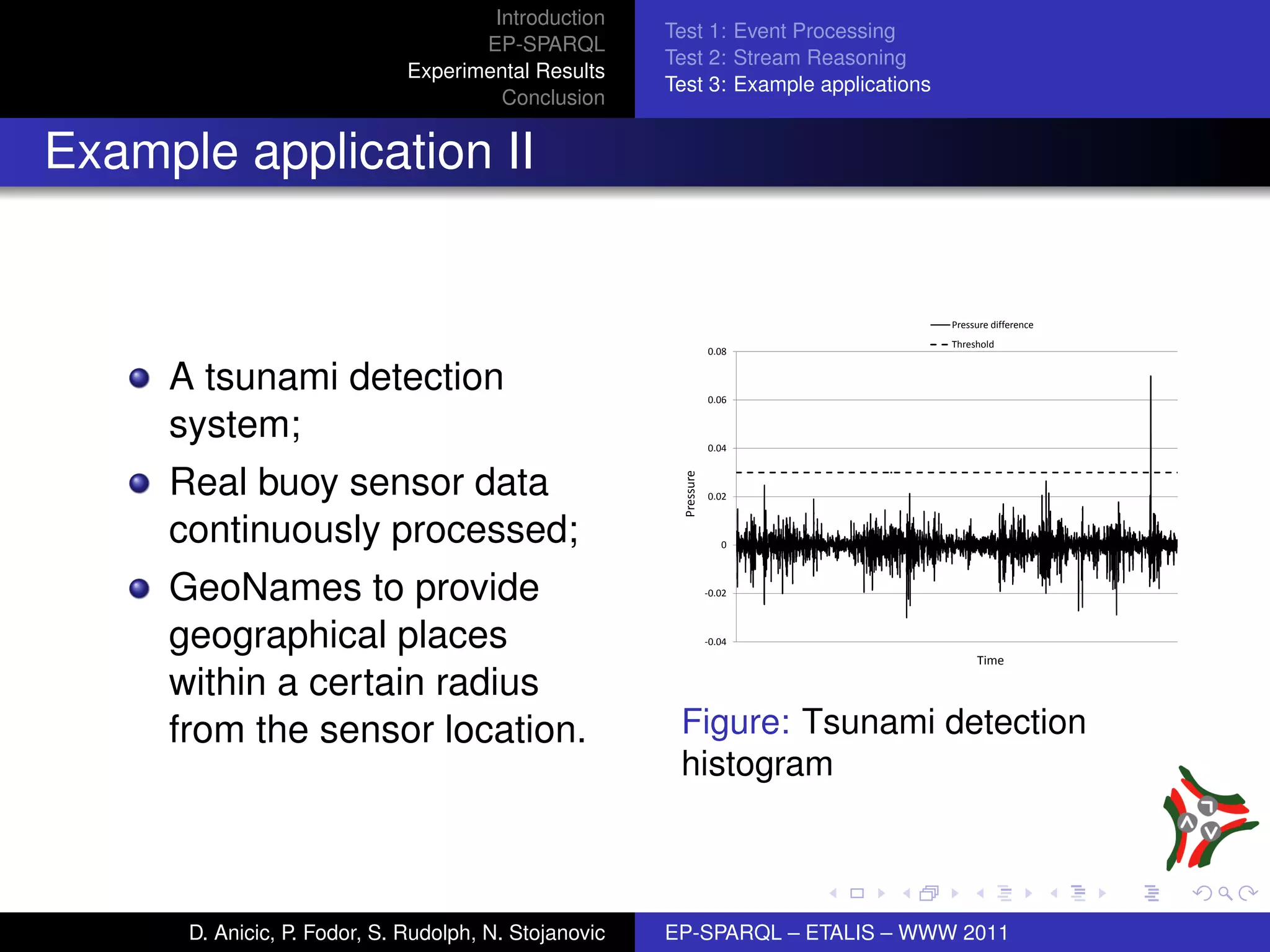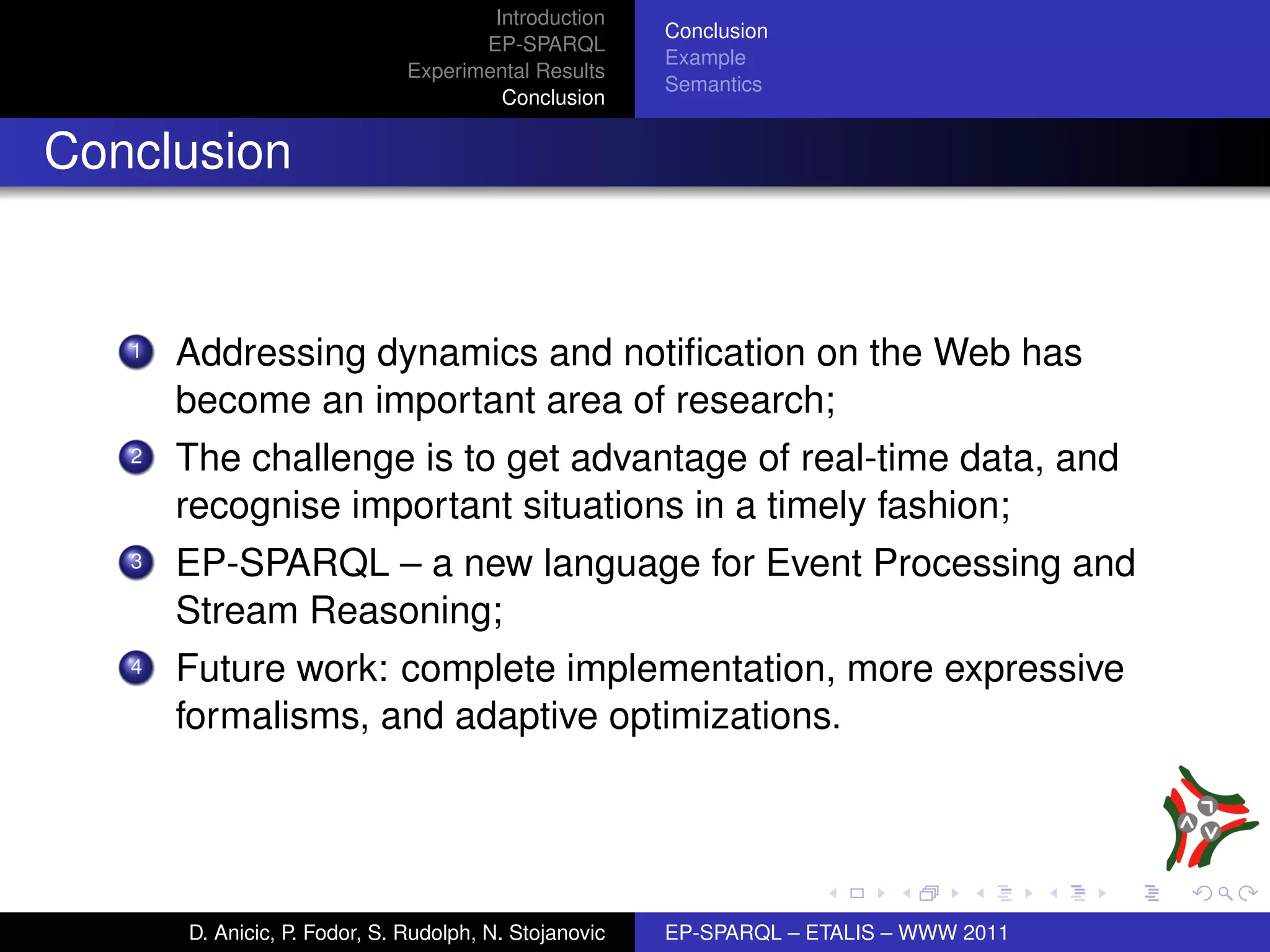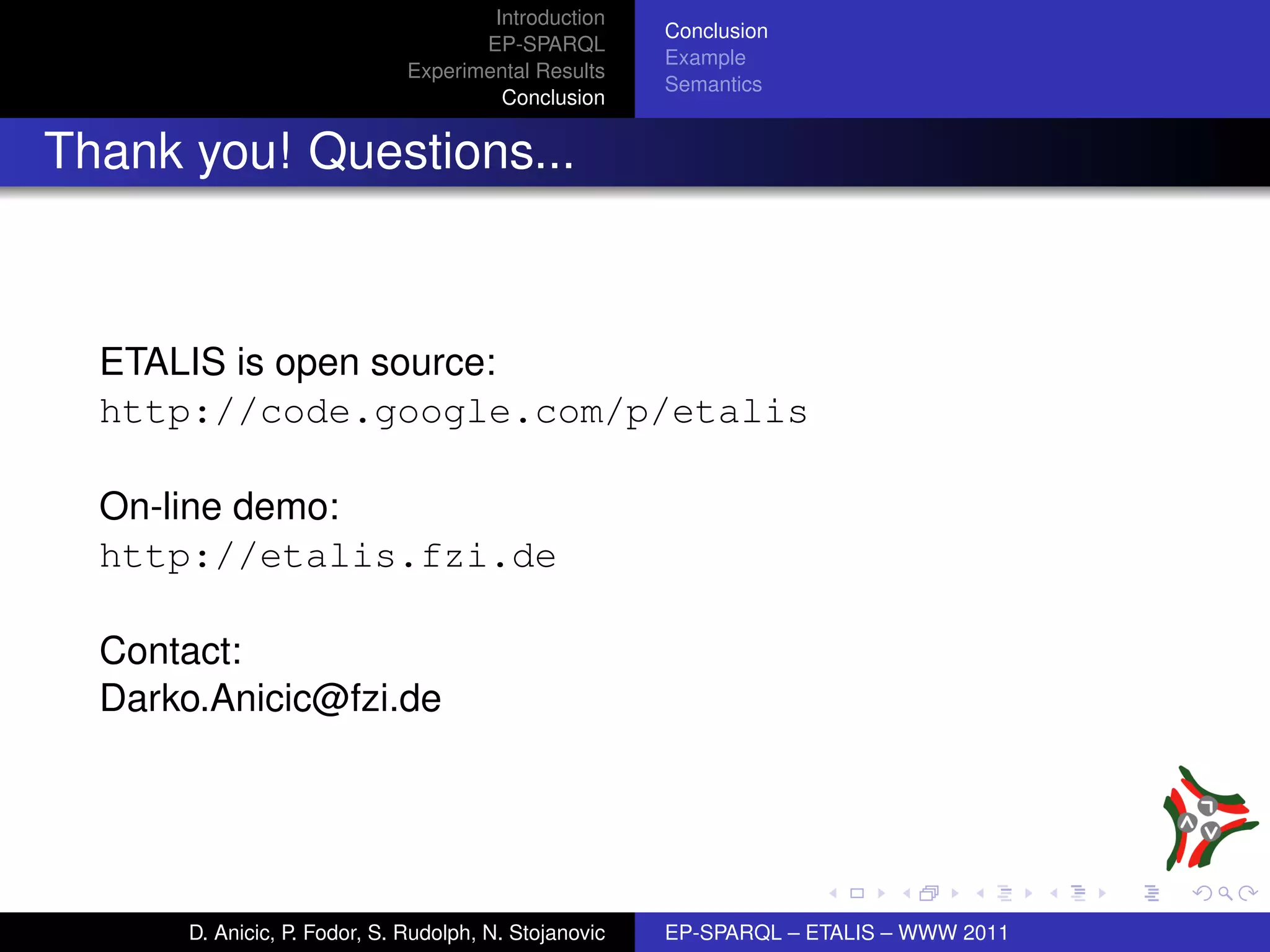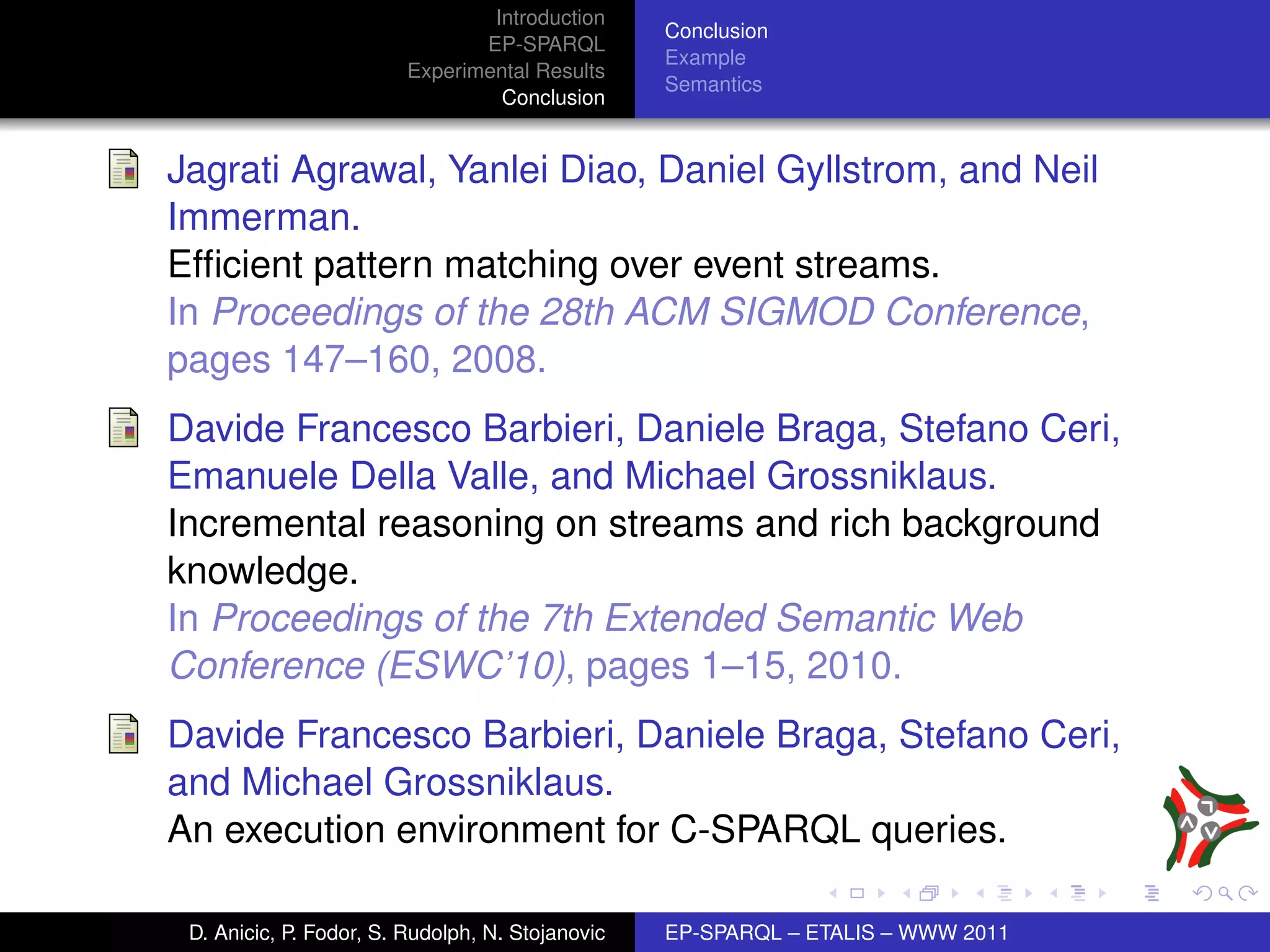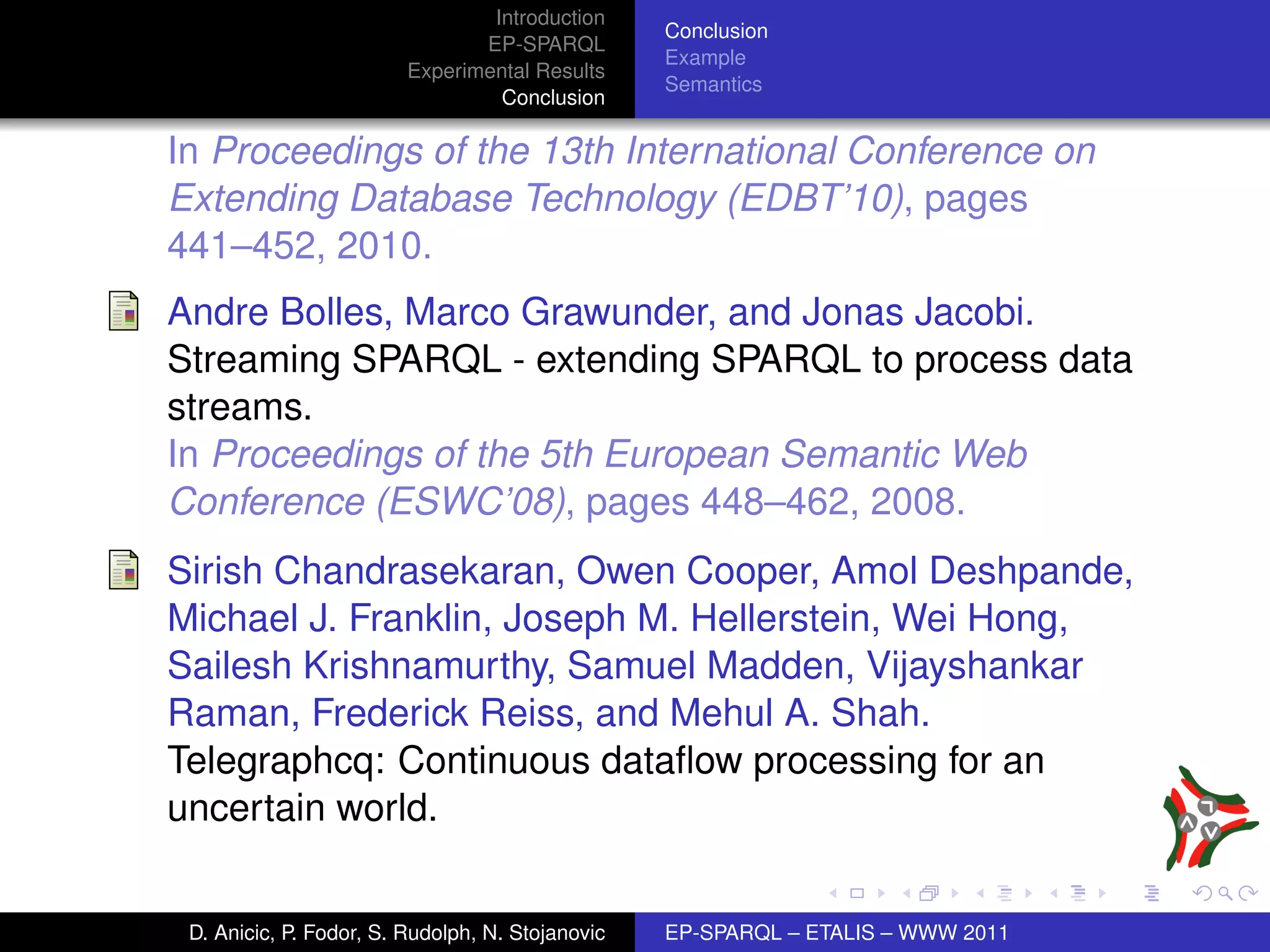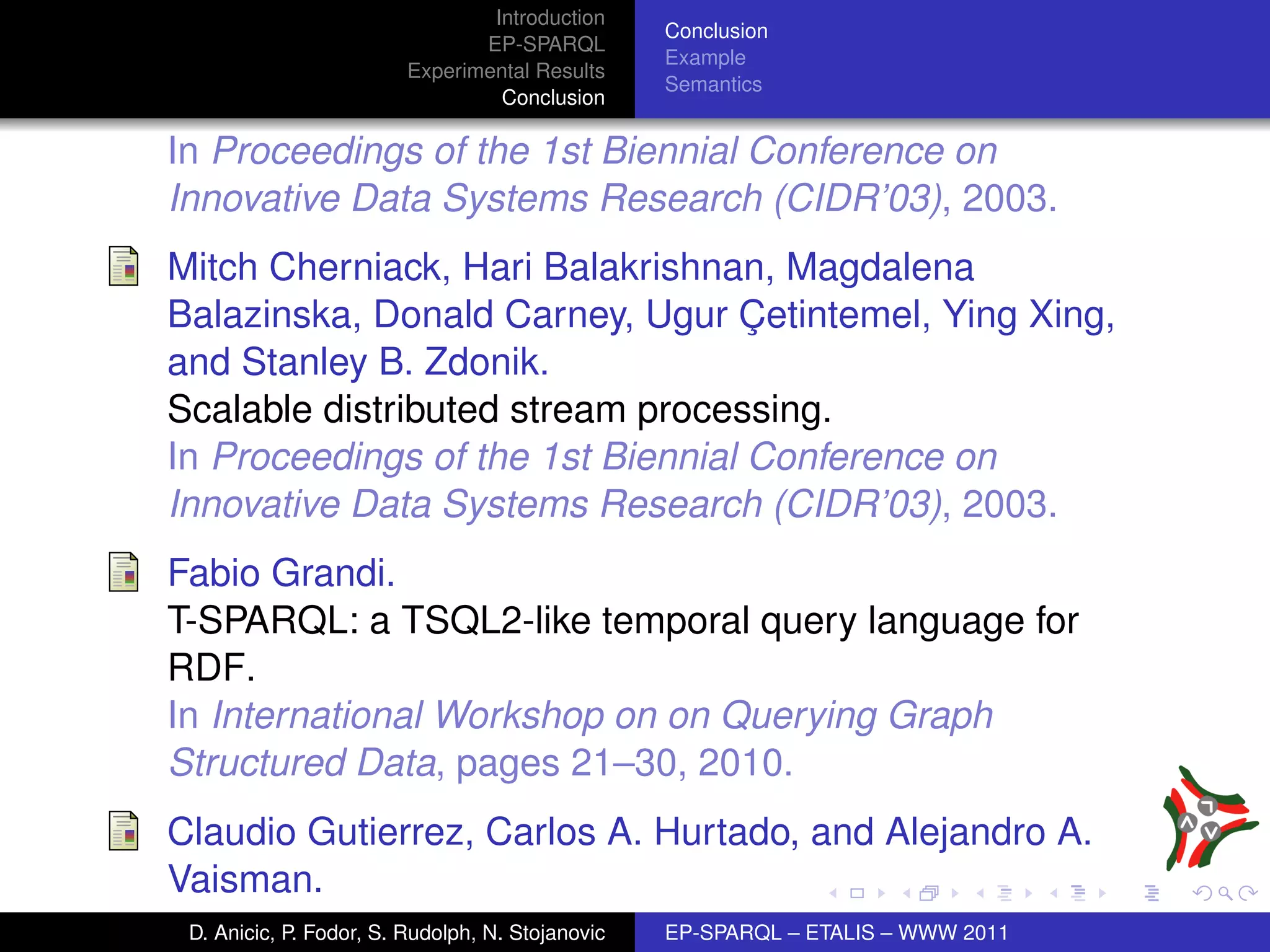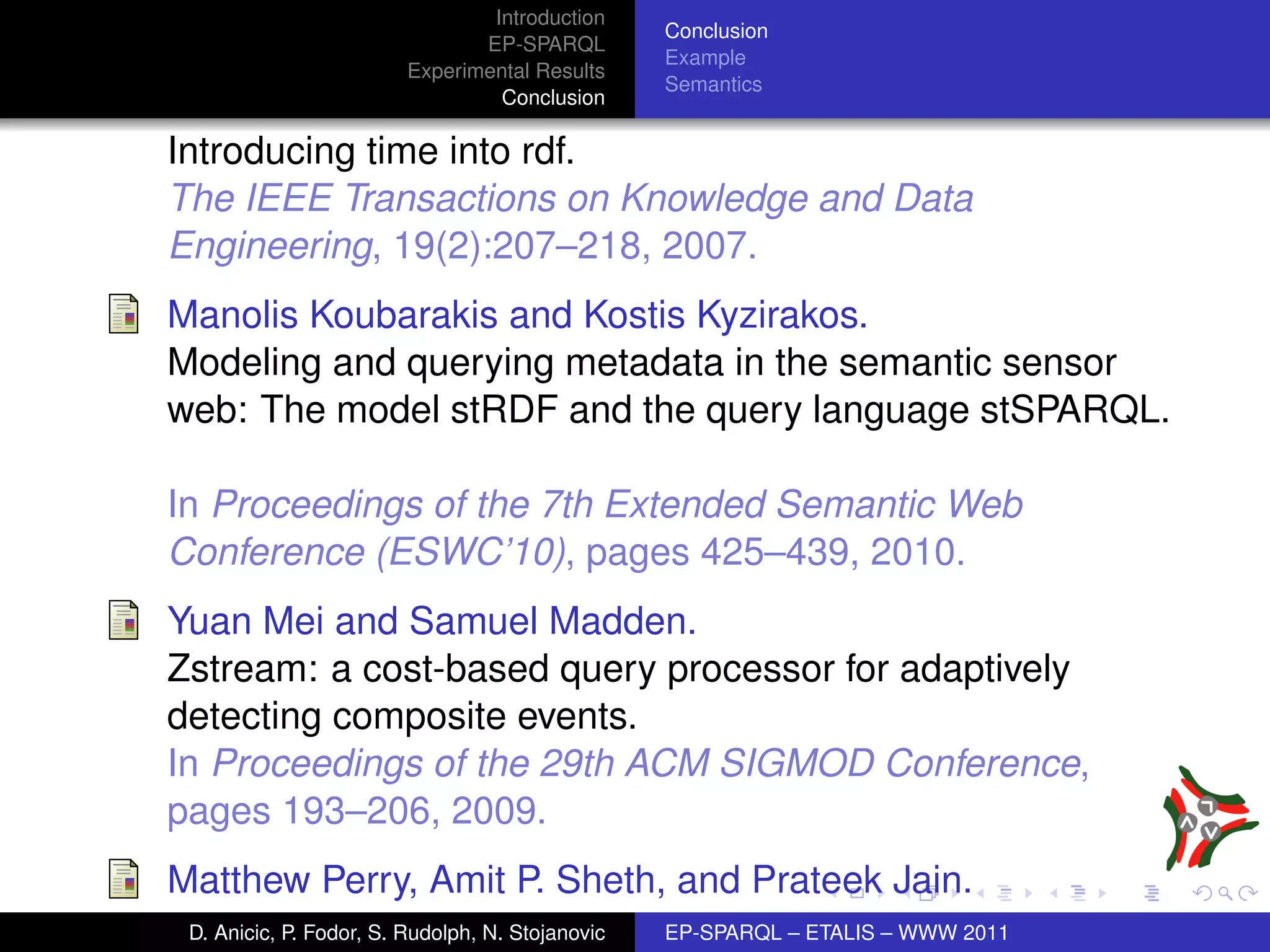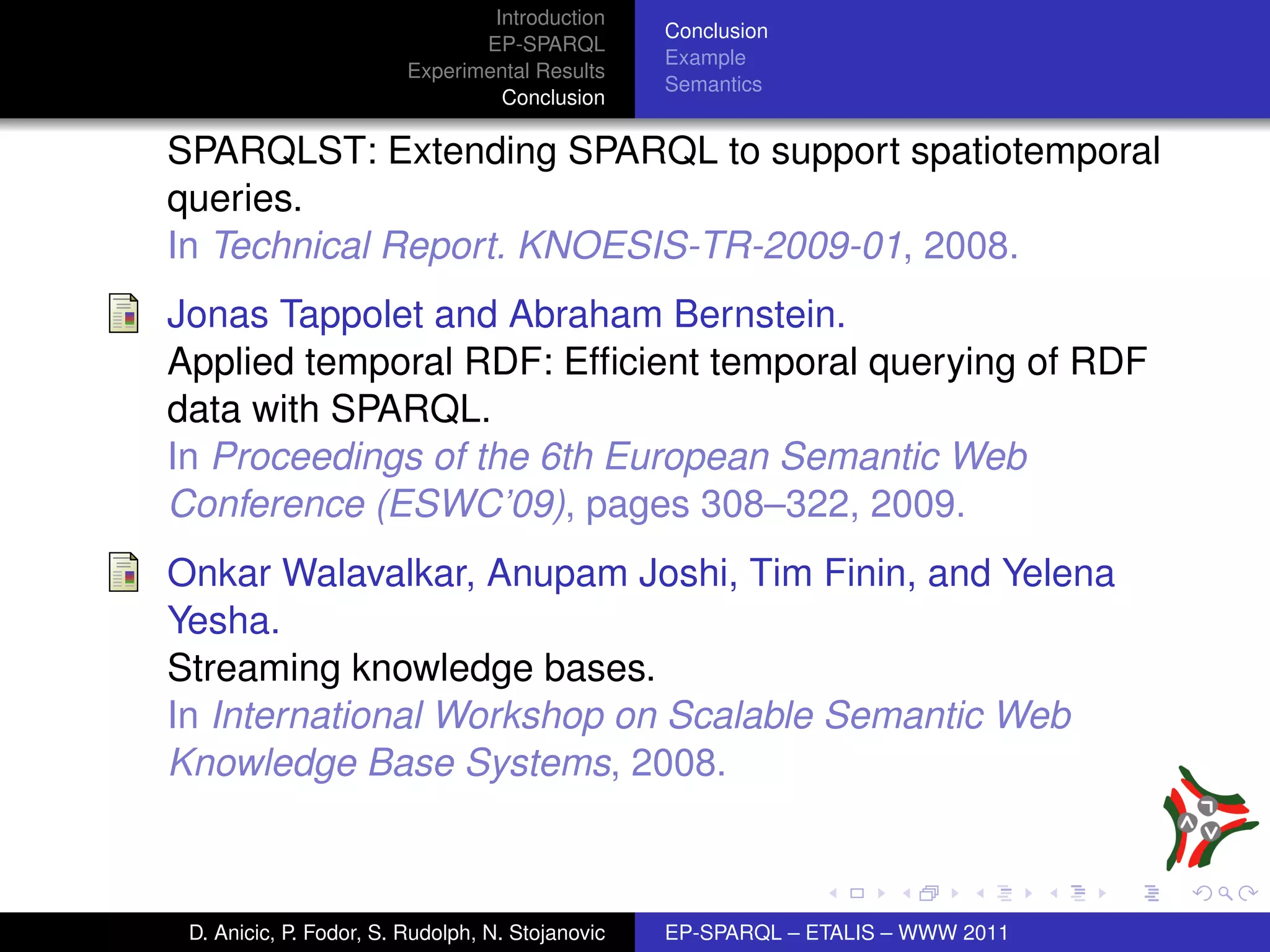The document discusses ep-SPARQL, a language designed for event processing and stream reasoning, addressing the challenge of effectively handling increasingly prevalent real-time data across various domains like finance and traffic management. It highlights the need for a unified language that allows for the combination of event processing with temporal and semantic reasoning in real-time scenarios. The paper details the syntax, semantics, and operators of ep-SPARQL, demonstrating its applicability through practical examples.
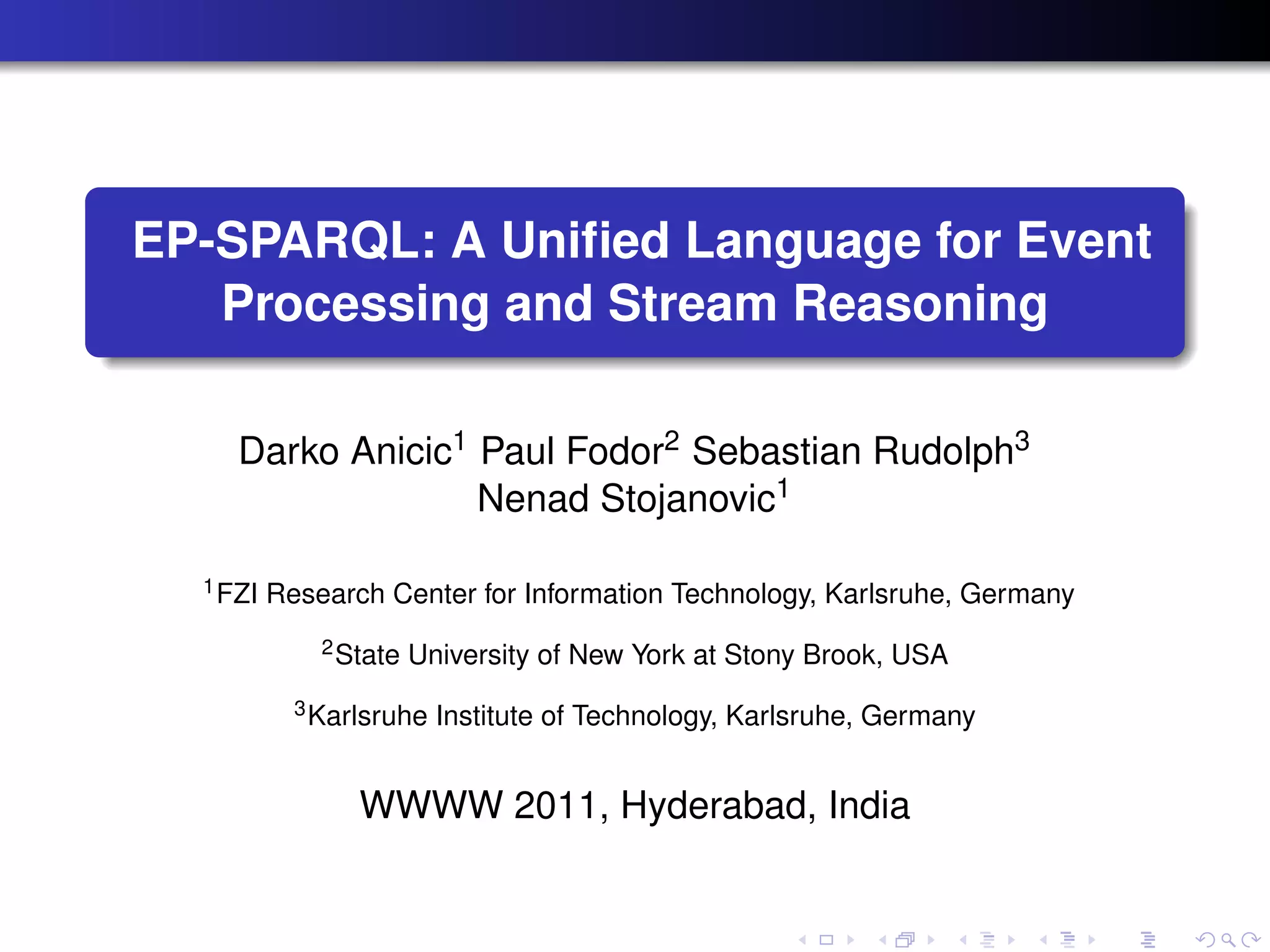
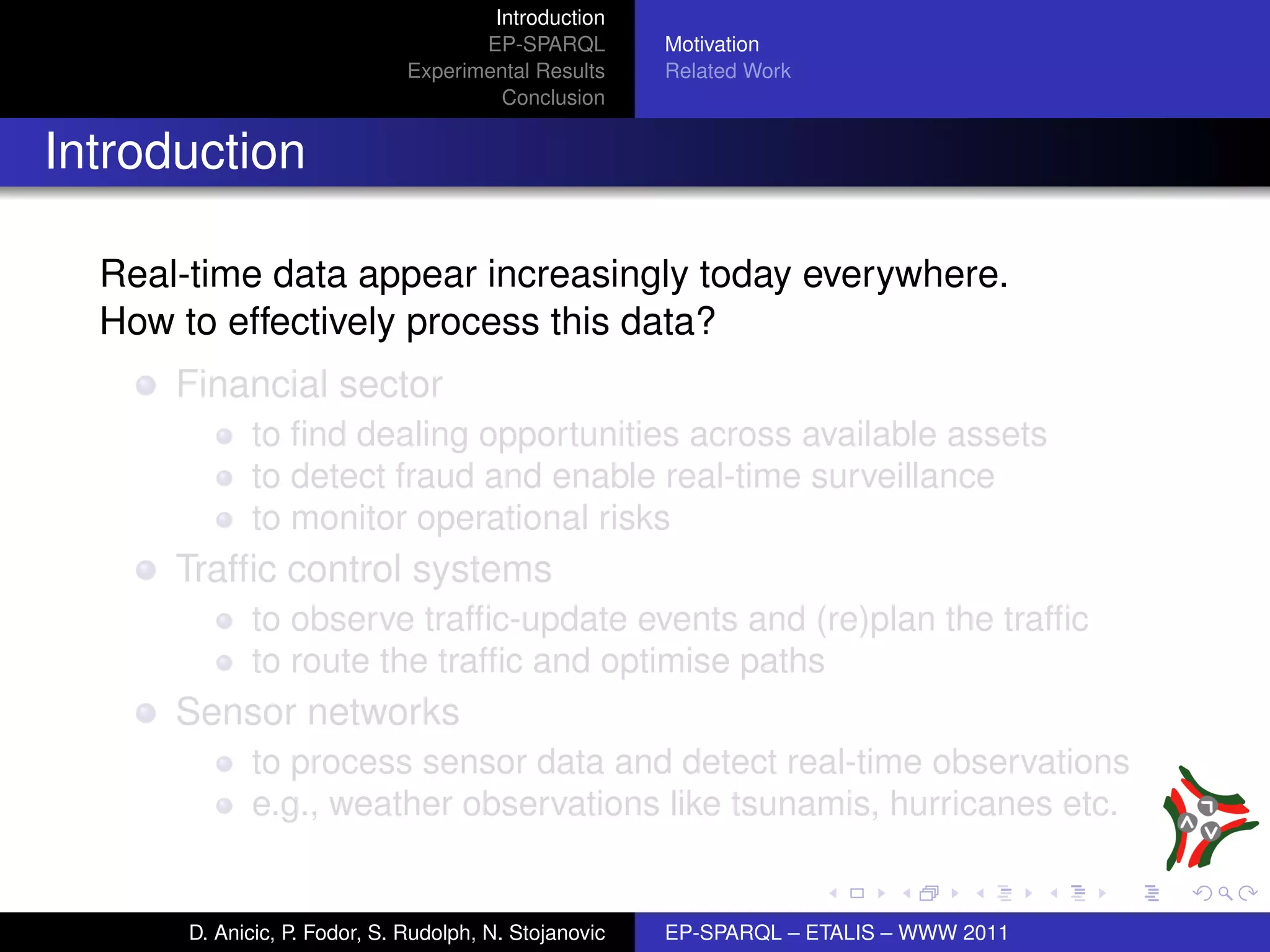

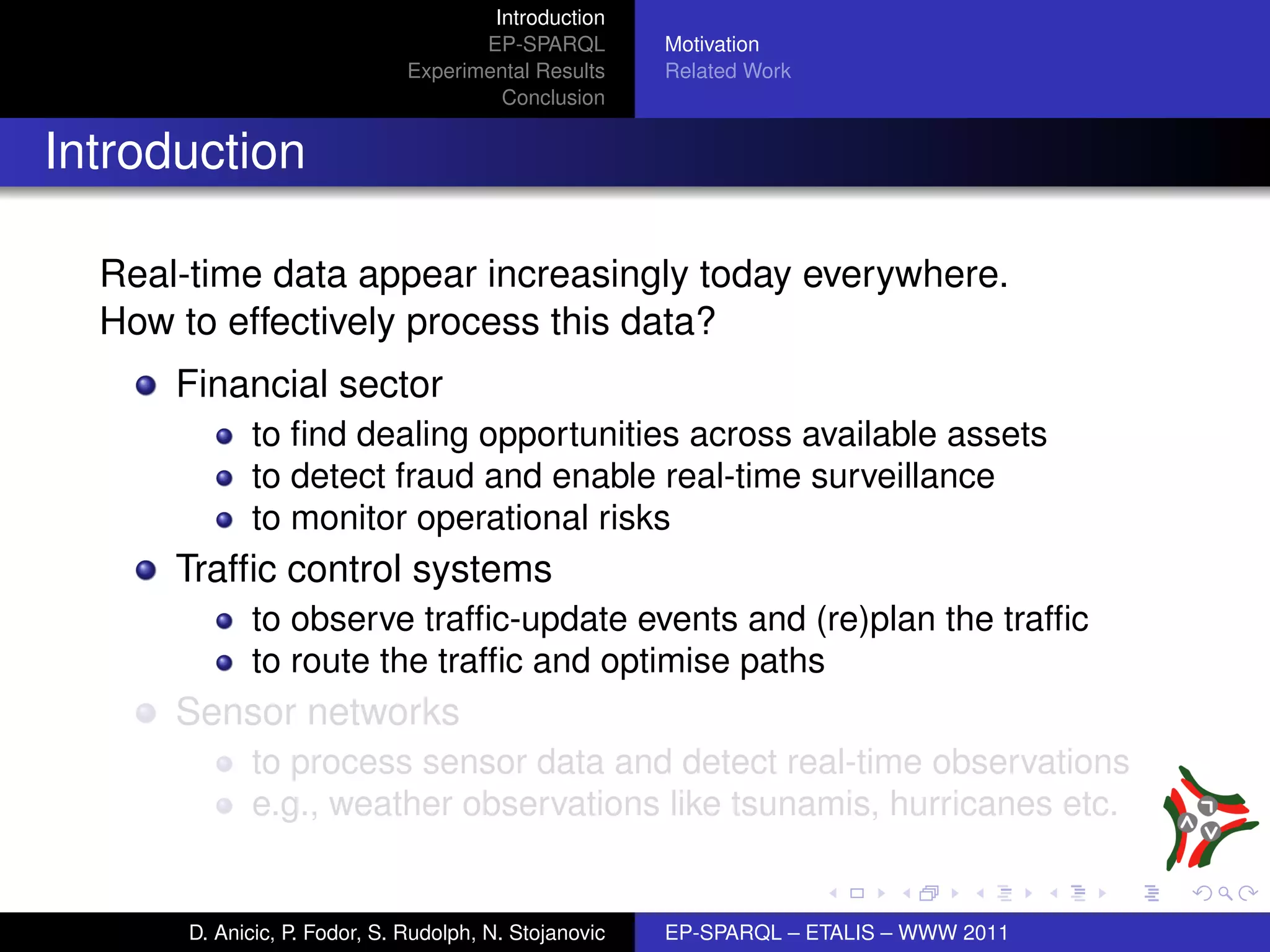
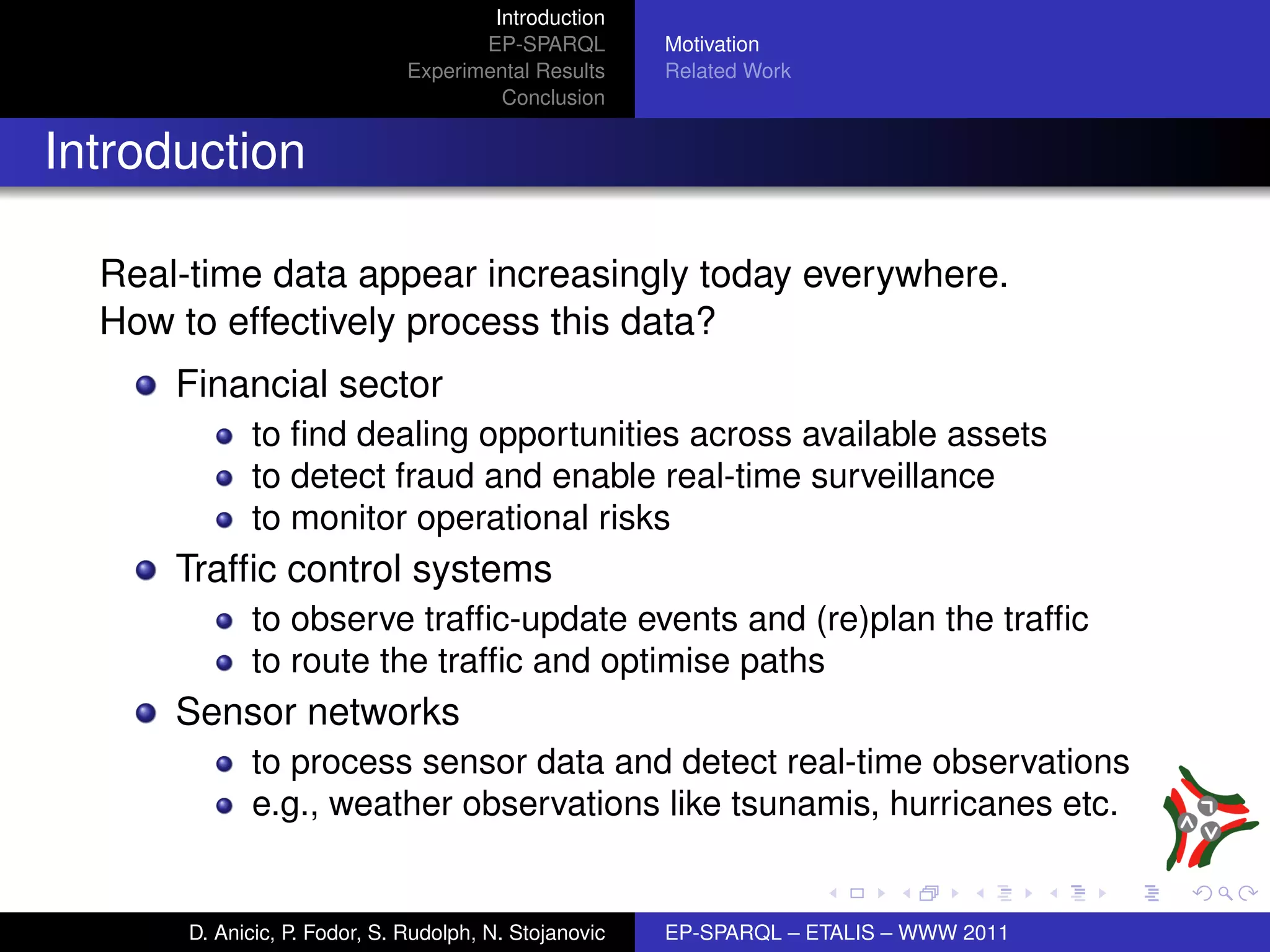

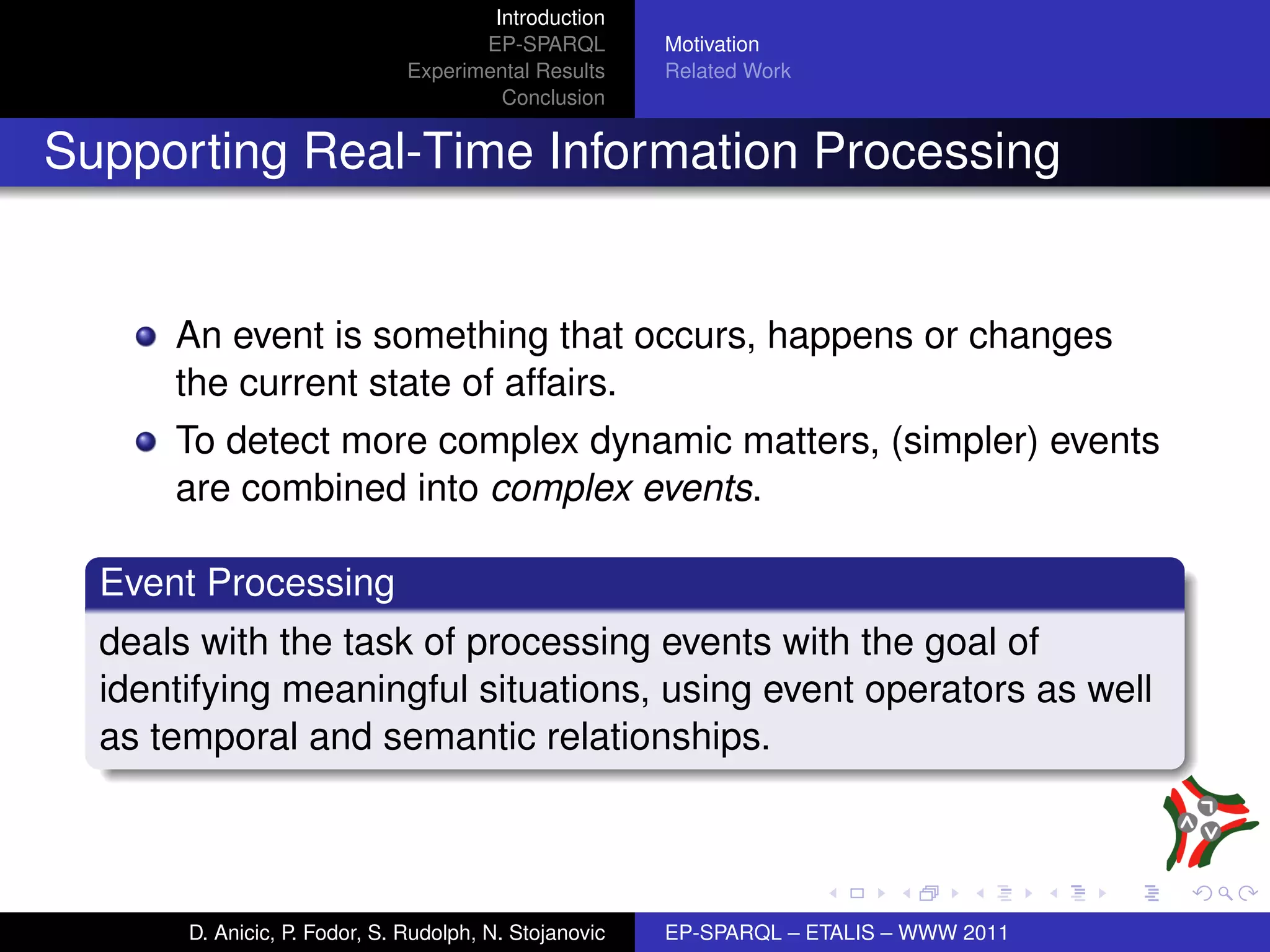
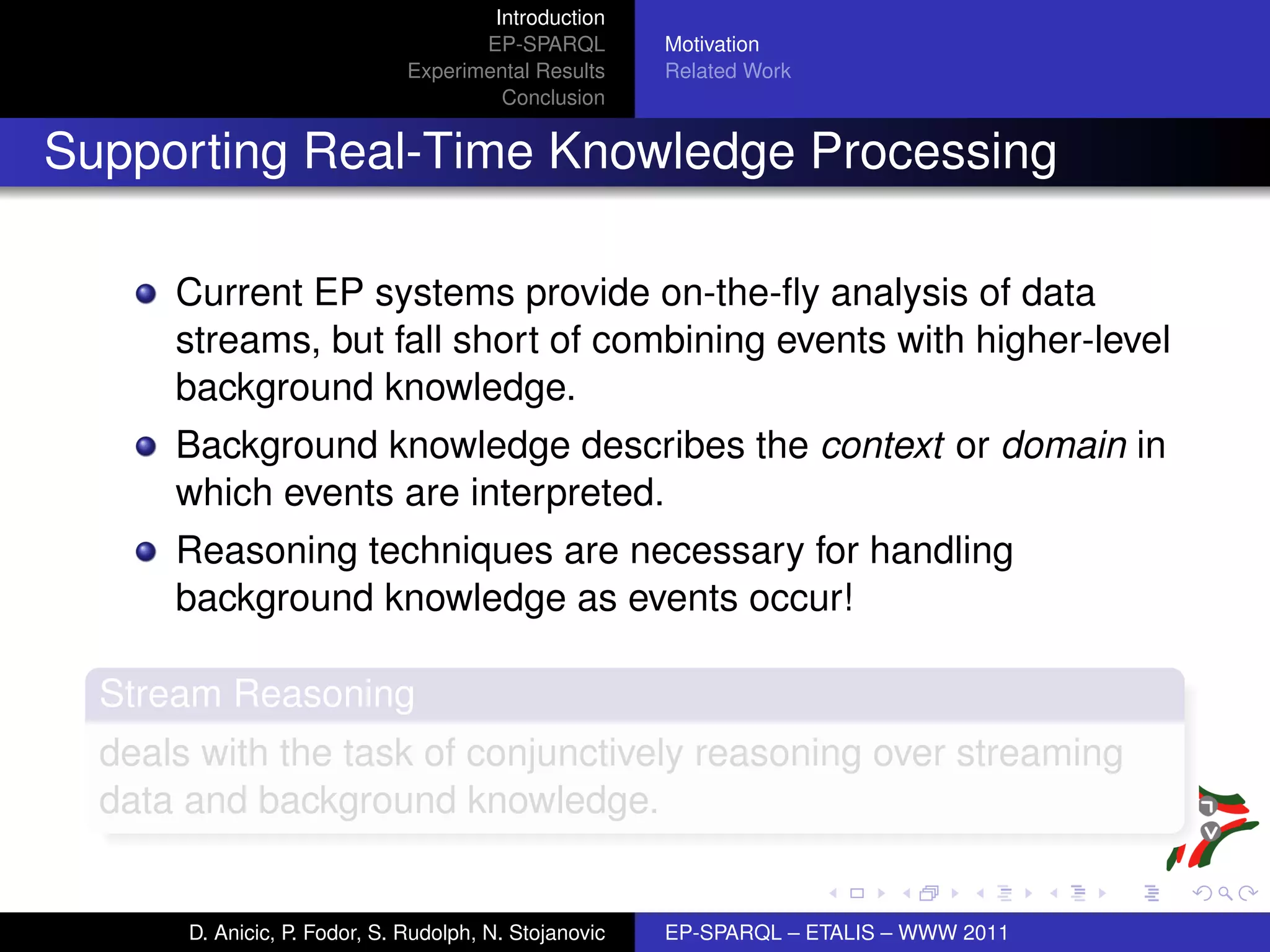
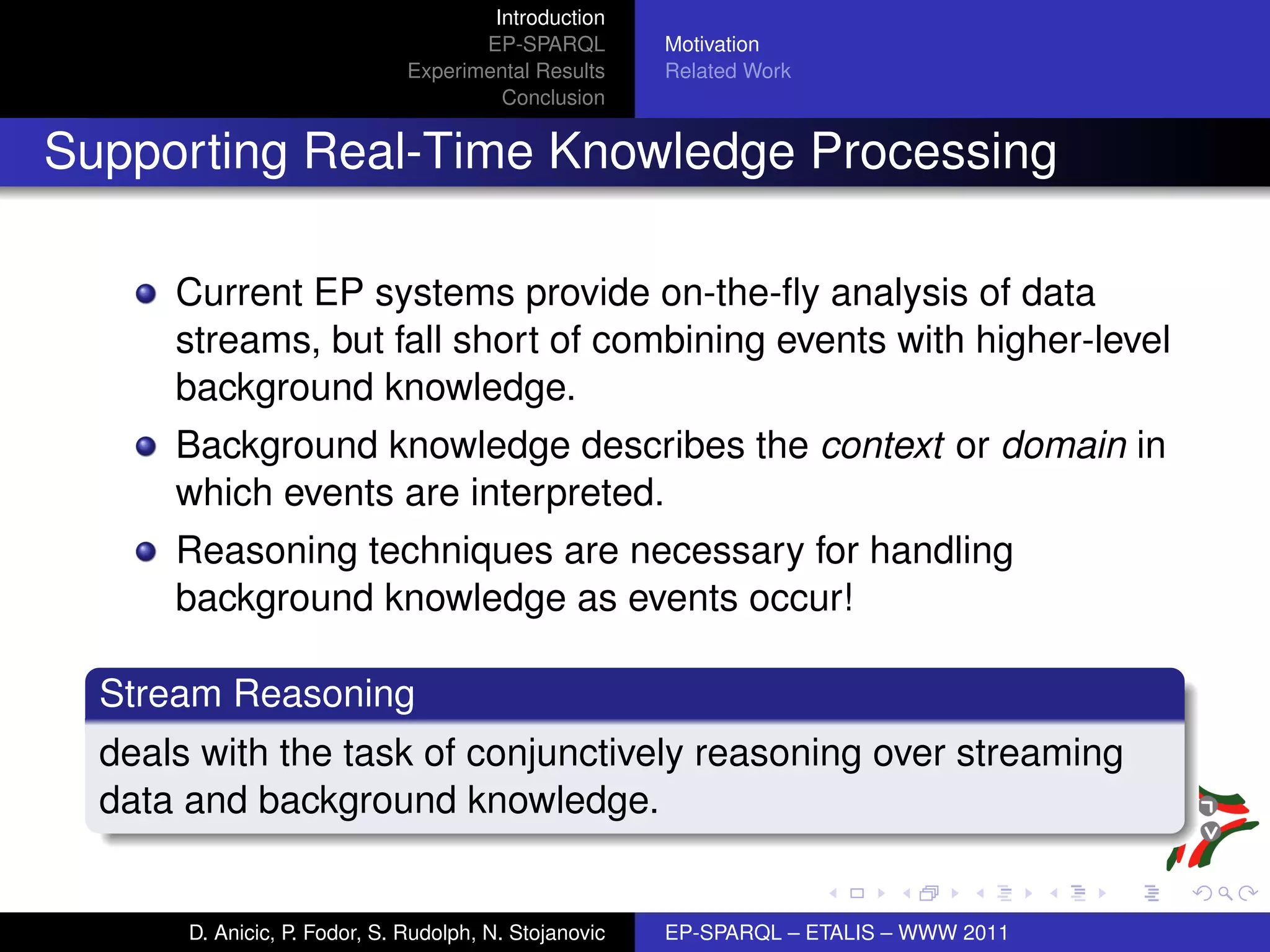


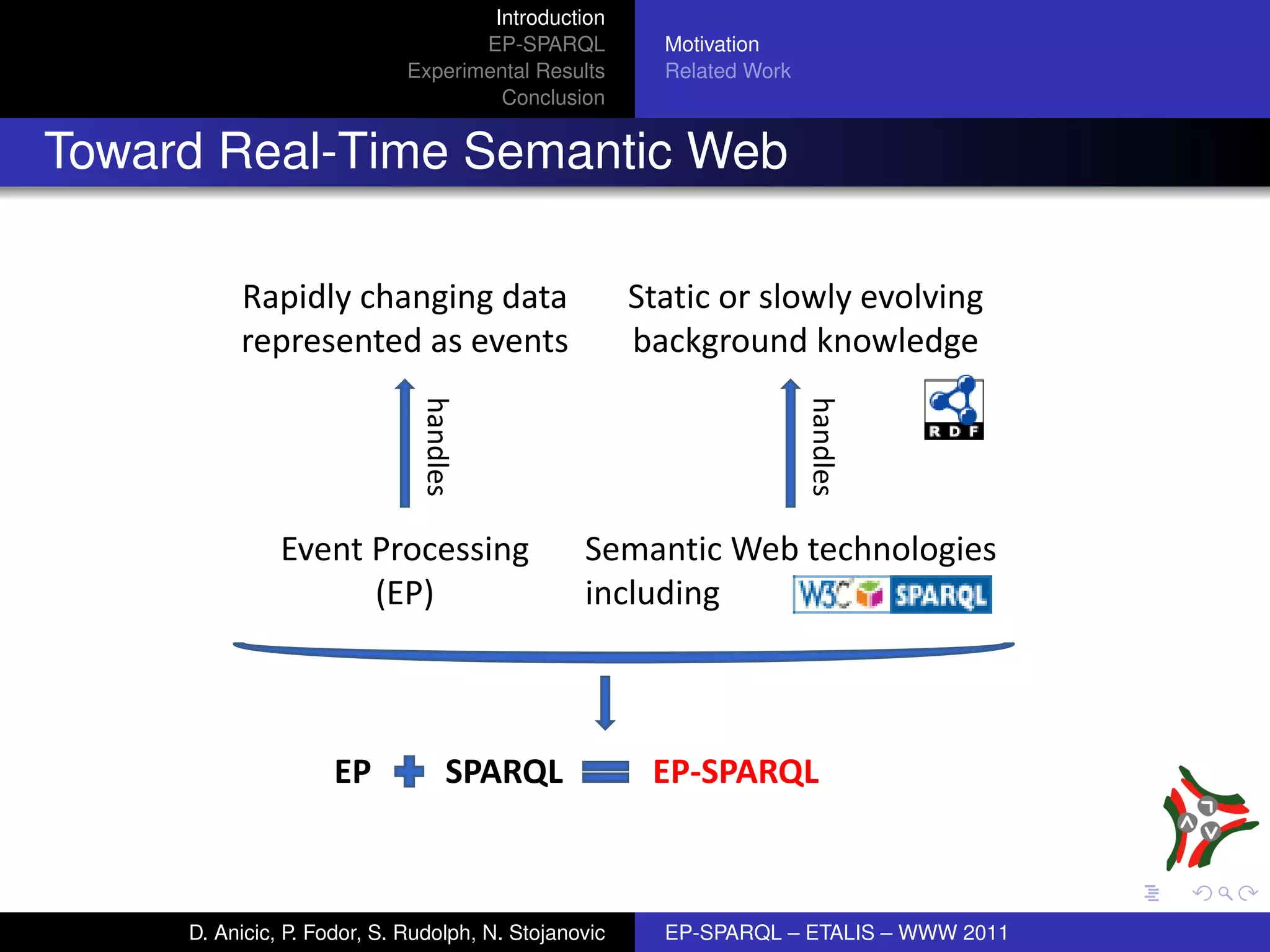
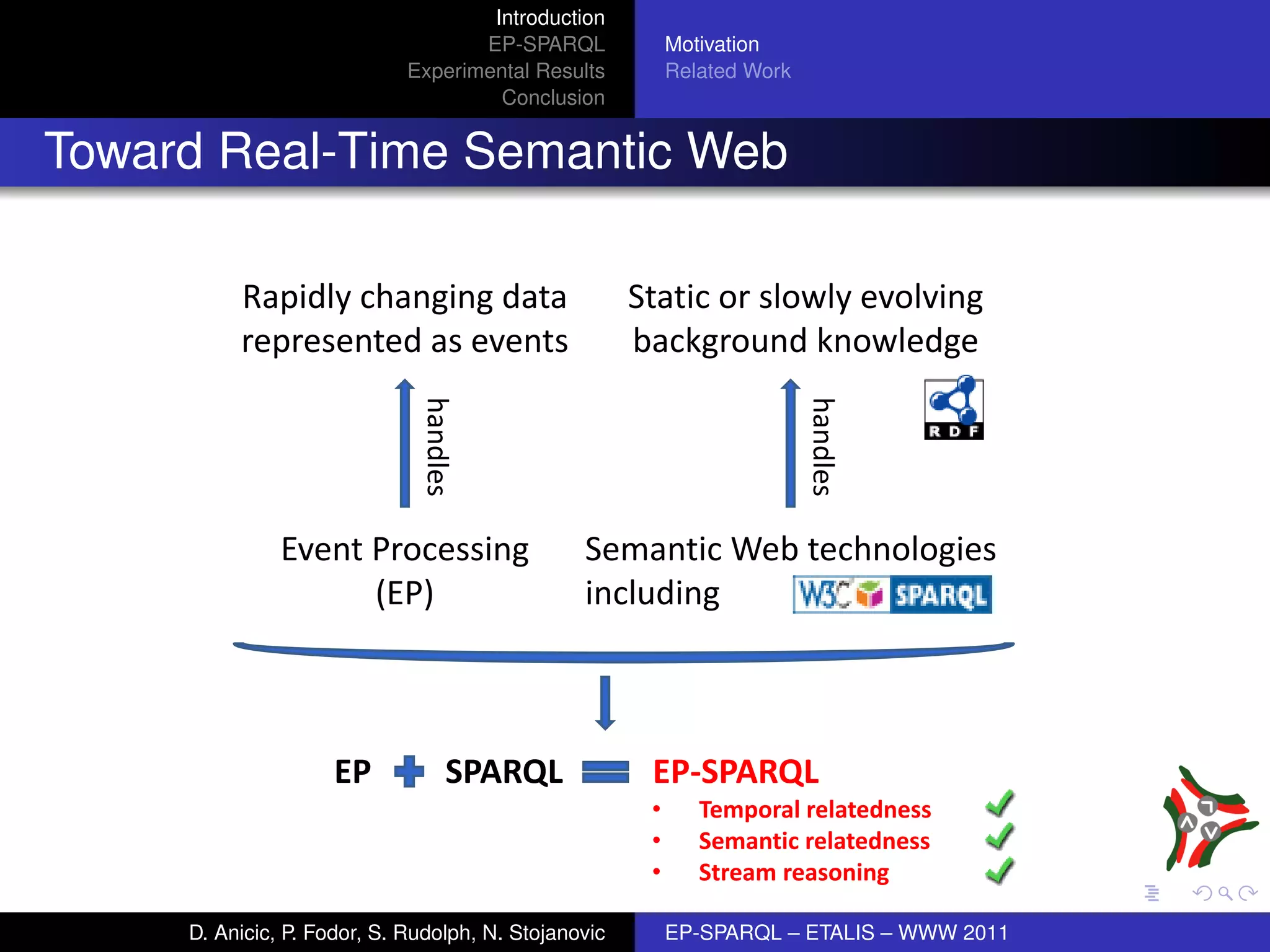
![Introduction
EP-SPARQL Motivation
Experimental Results Related Work
Conclusion
Related Work
Streaming Databases
SASE [1]
ZStream [10]
CEDR [6]
TelegraphCQ [5]
Temporal (and Spatial) RDF
Introducing time into RDF [8]
SPARQL-ST [11], Temporal SPARQL [12], stSPARQL [9],
and T-SPARQL [7]
Stream Reasoning
C-SPARQL [3]
Streaming Knowledge Bases [13]
Streaming SPARQL [4]
Incremental reasoning [2]
D. Anicic, P. Fodor, S. Rudolph, N. Stojanovic EP-SPARQL – ETALIS – WWW 2011](https://image.slidesharecdn.com/www29-anicic-110404014908-phpapp02/75/EP-SPARQL-A-Unified-Language-for-Event-Processing-and-Stream-Reasoning-14-2048.jpg)
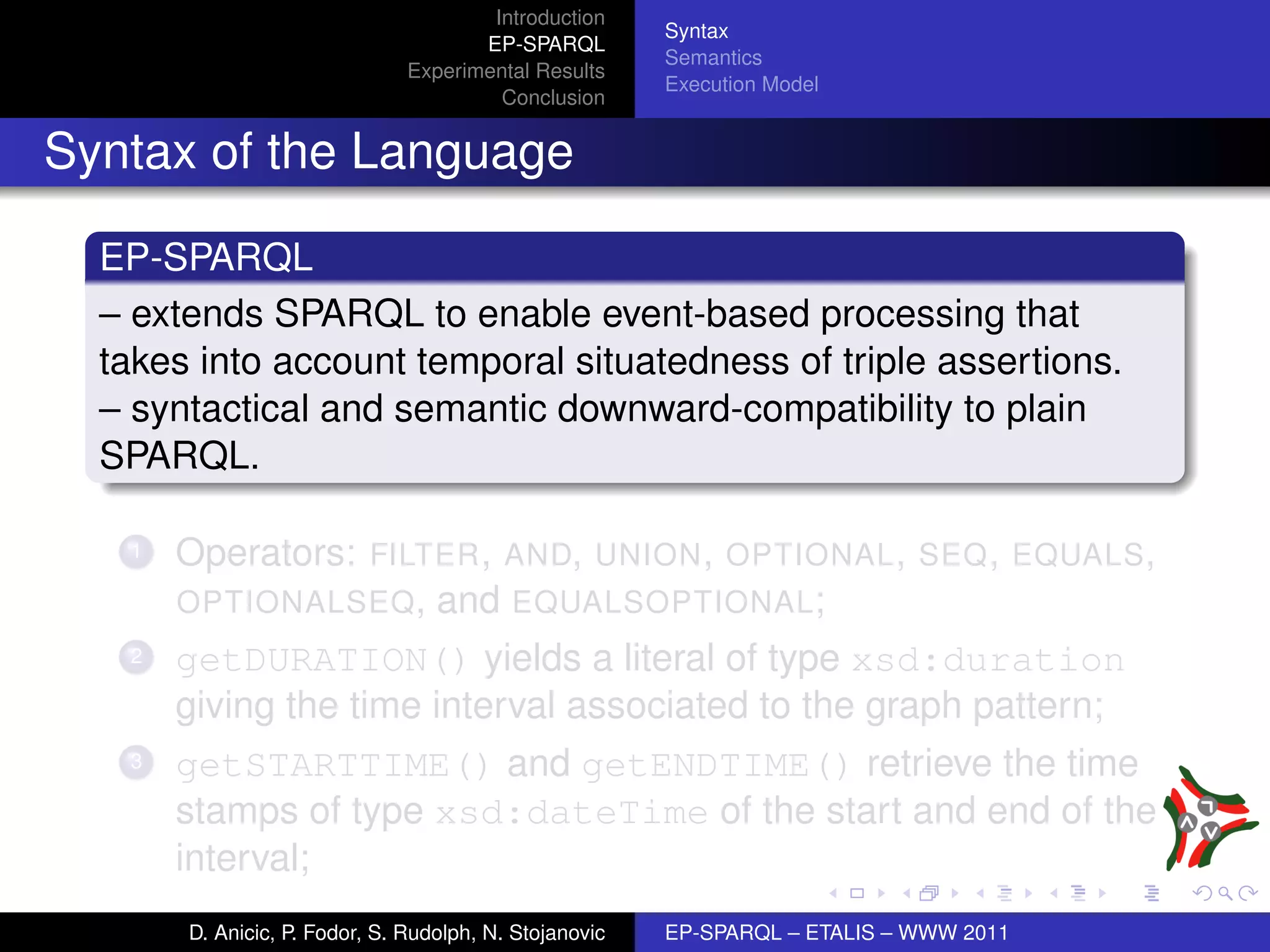
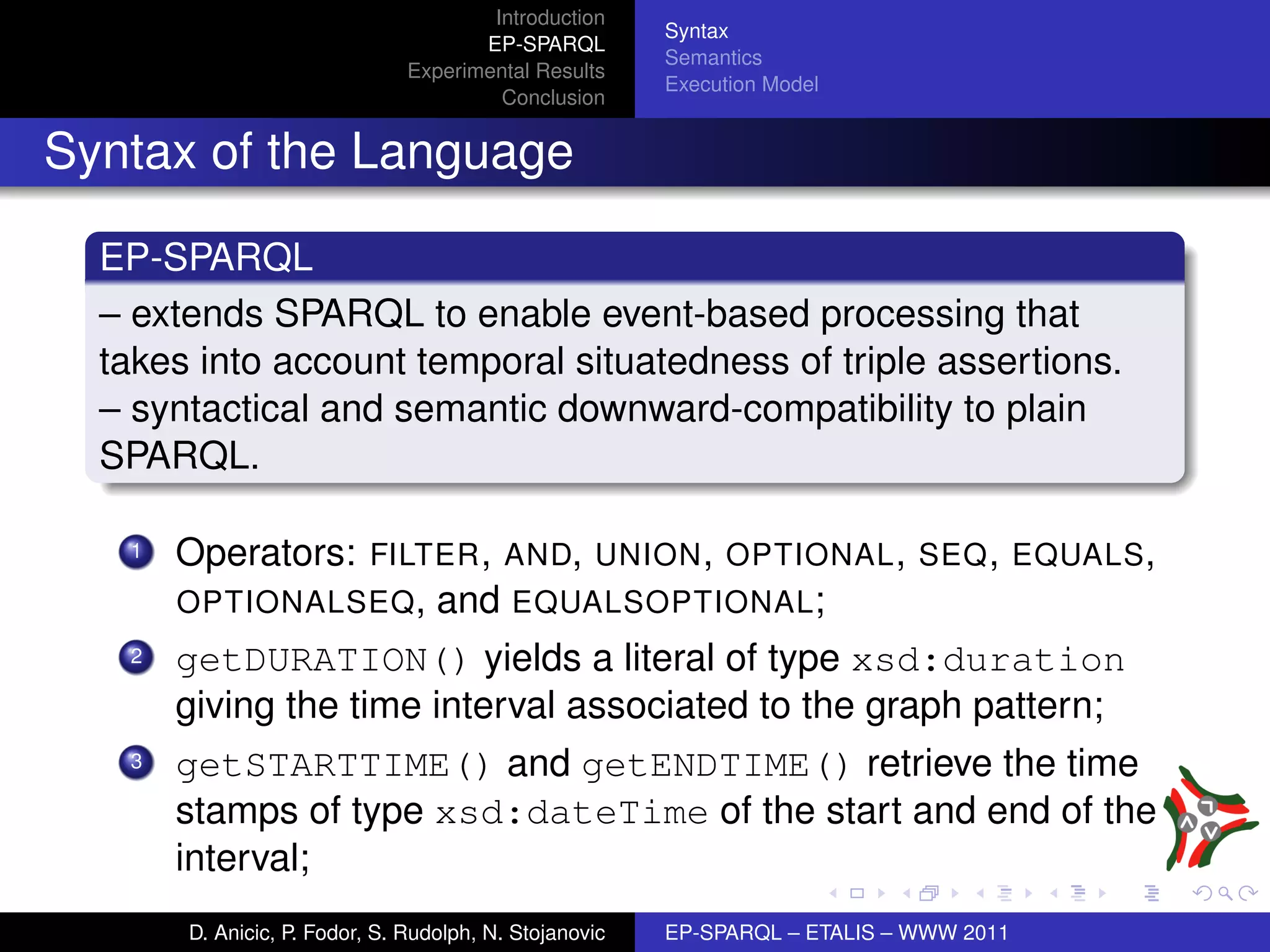
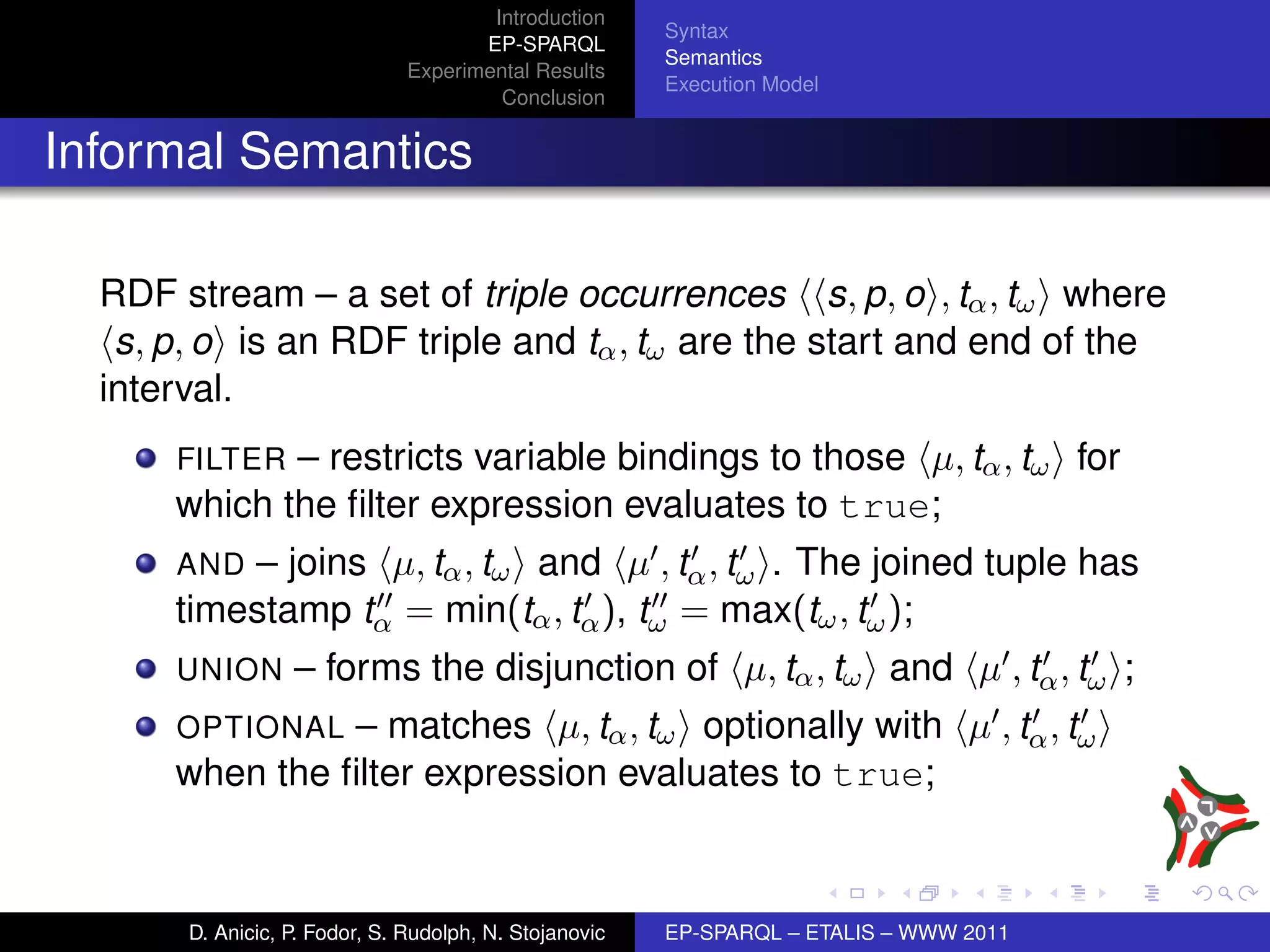
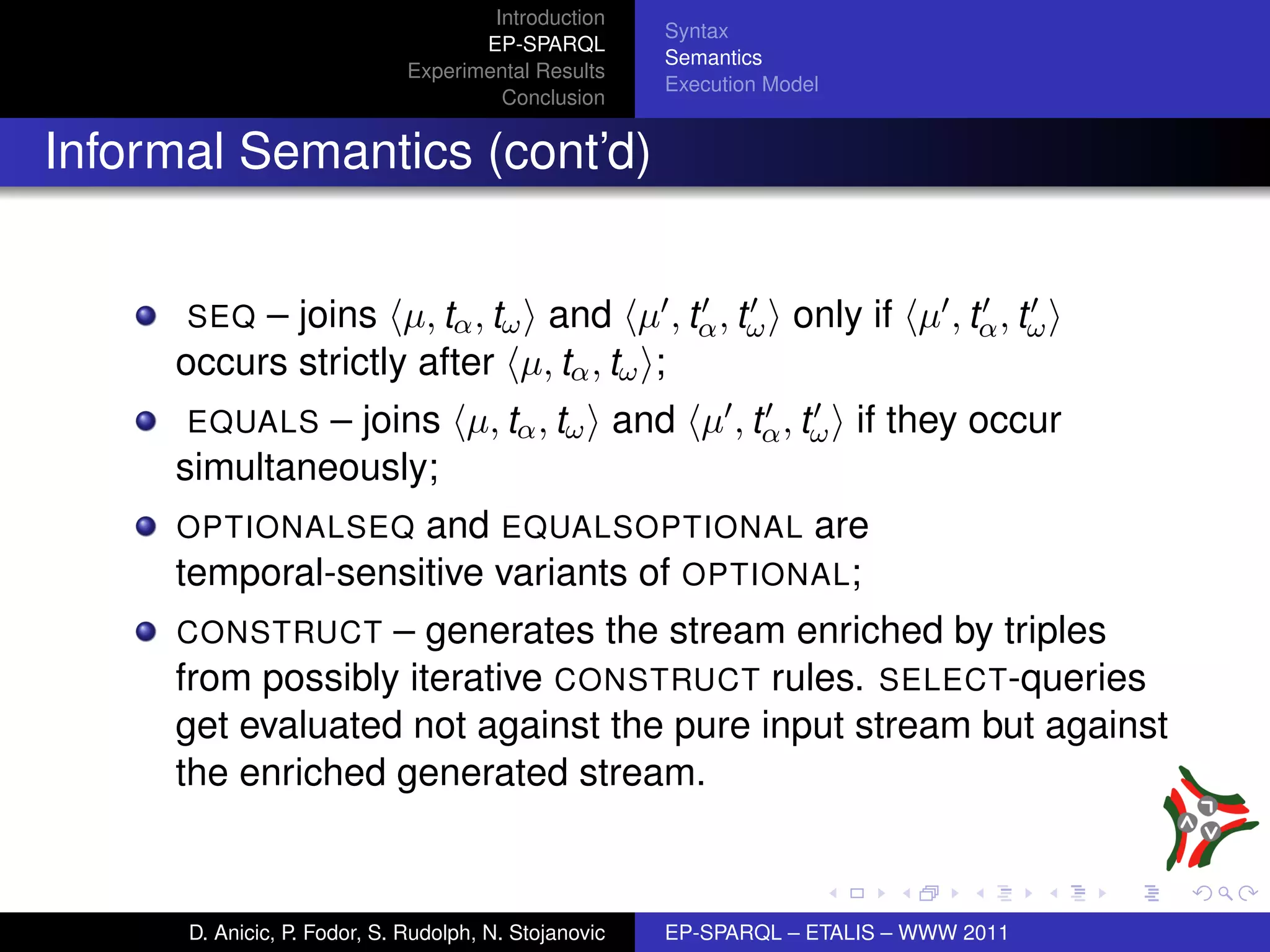
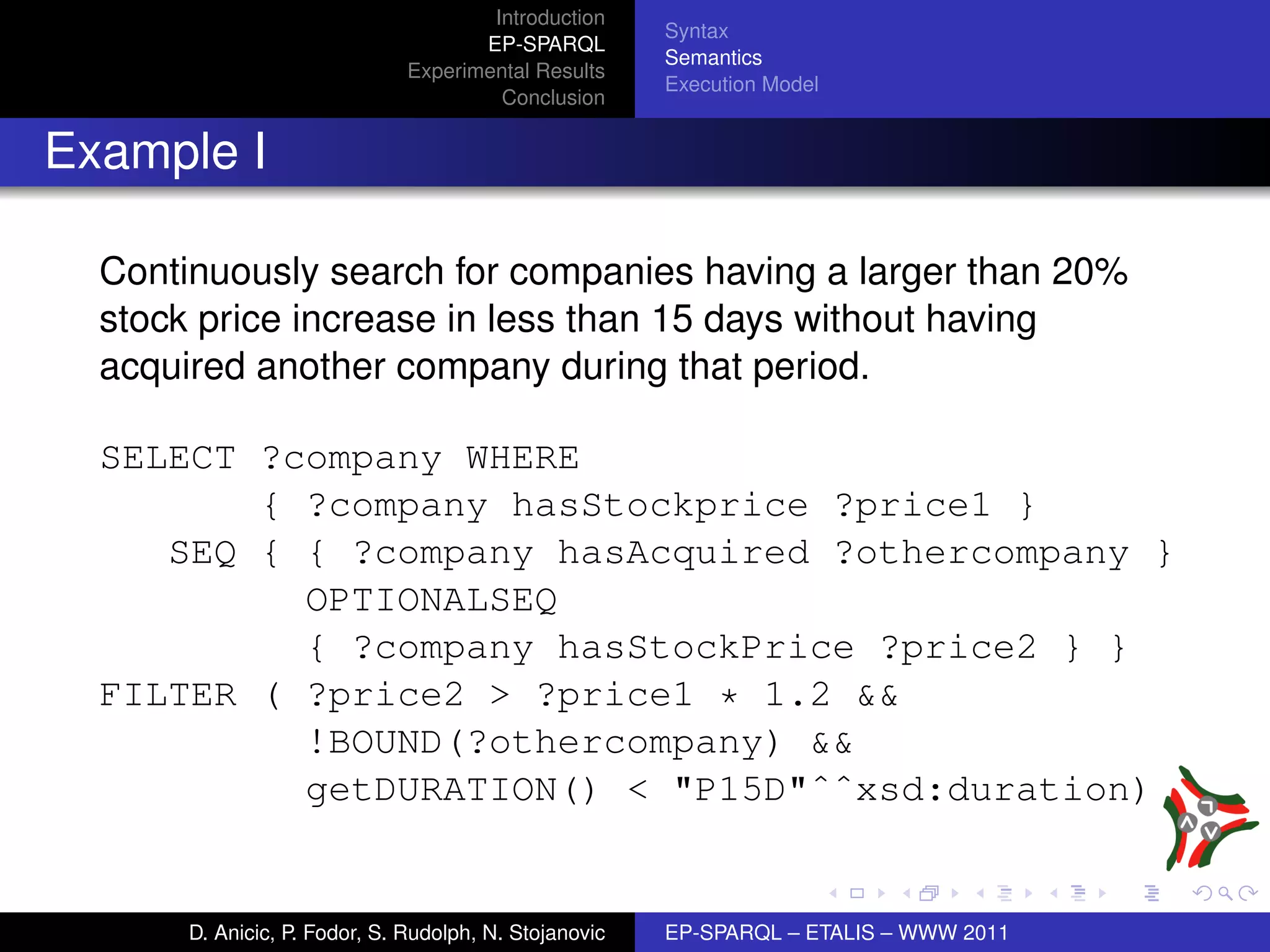
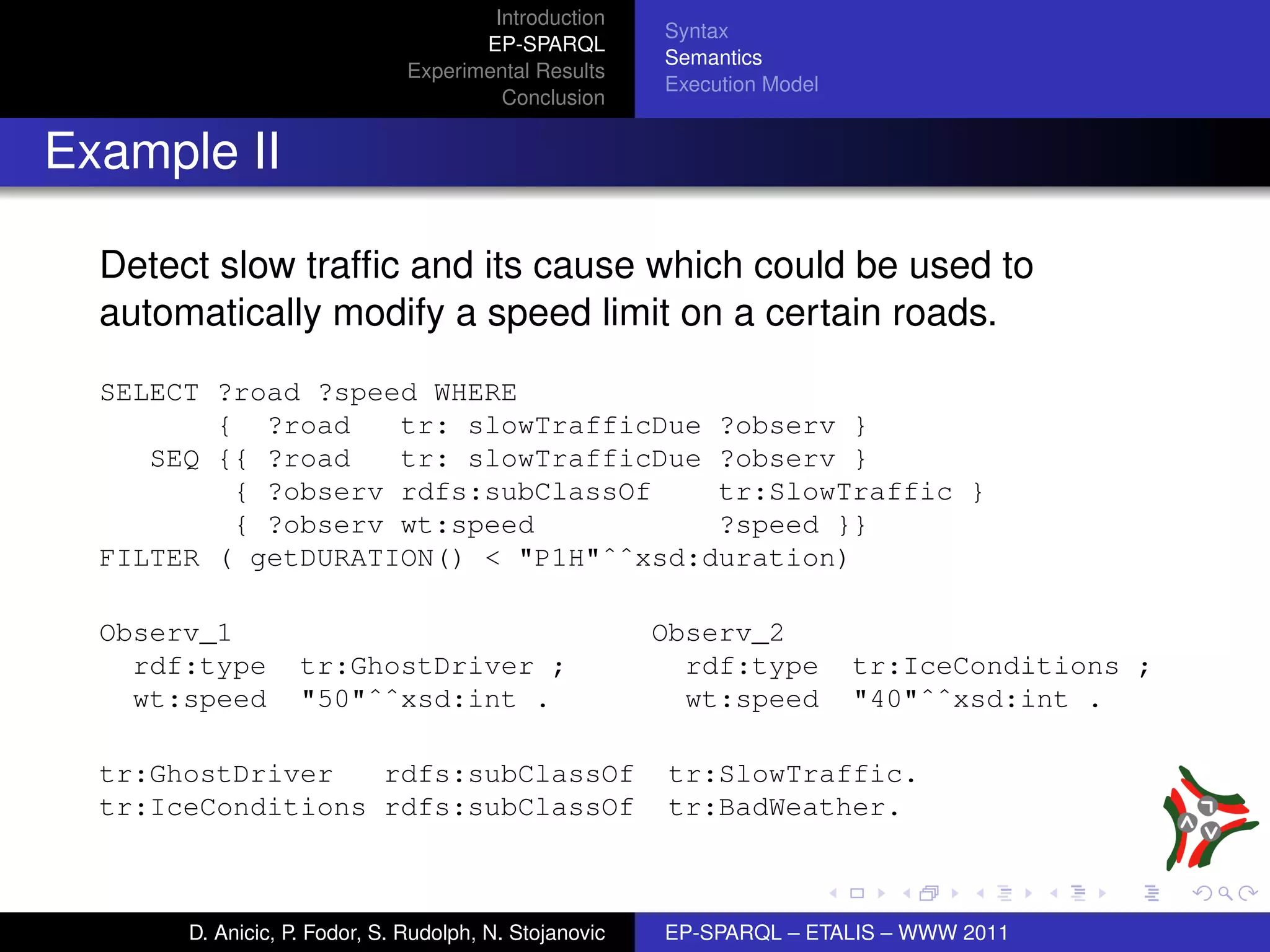
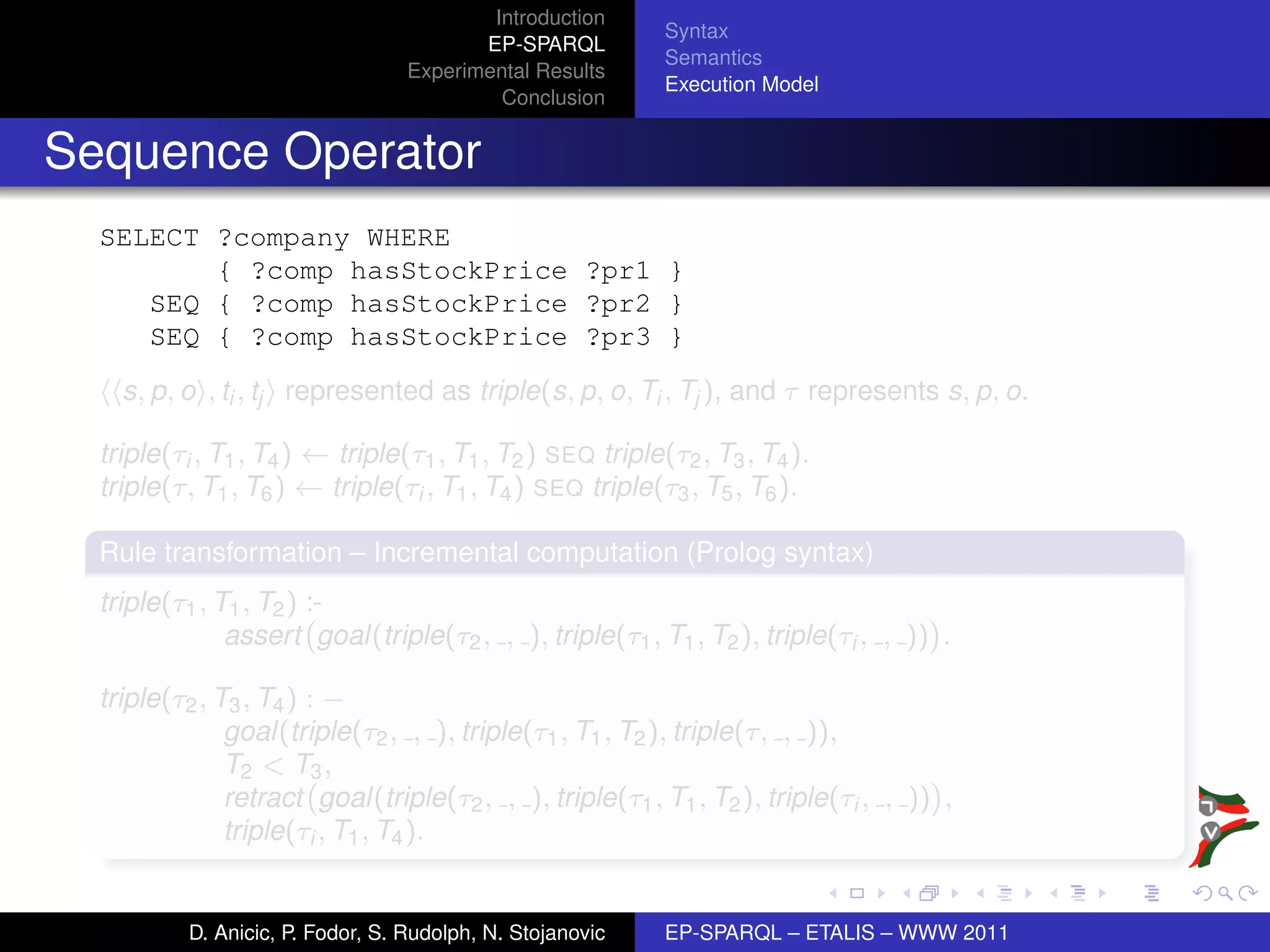
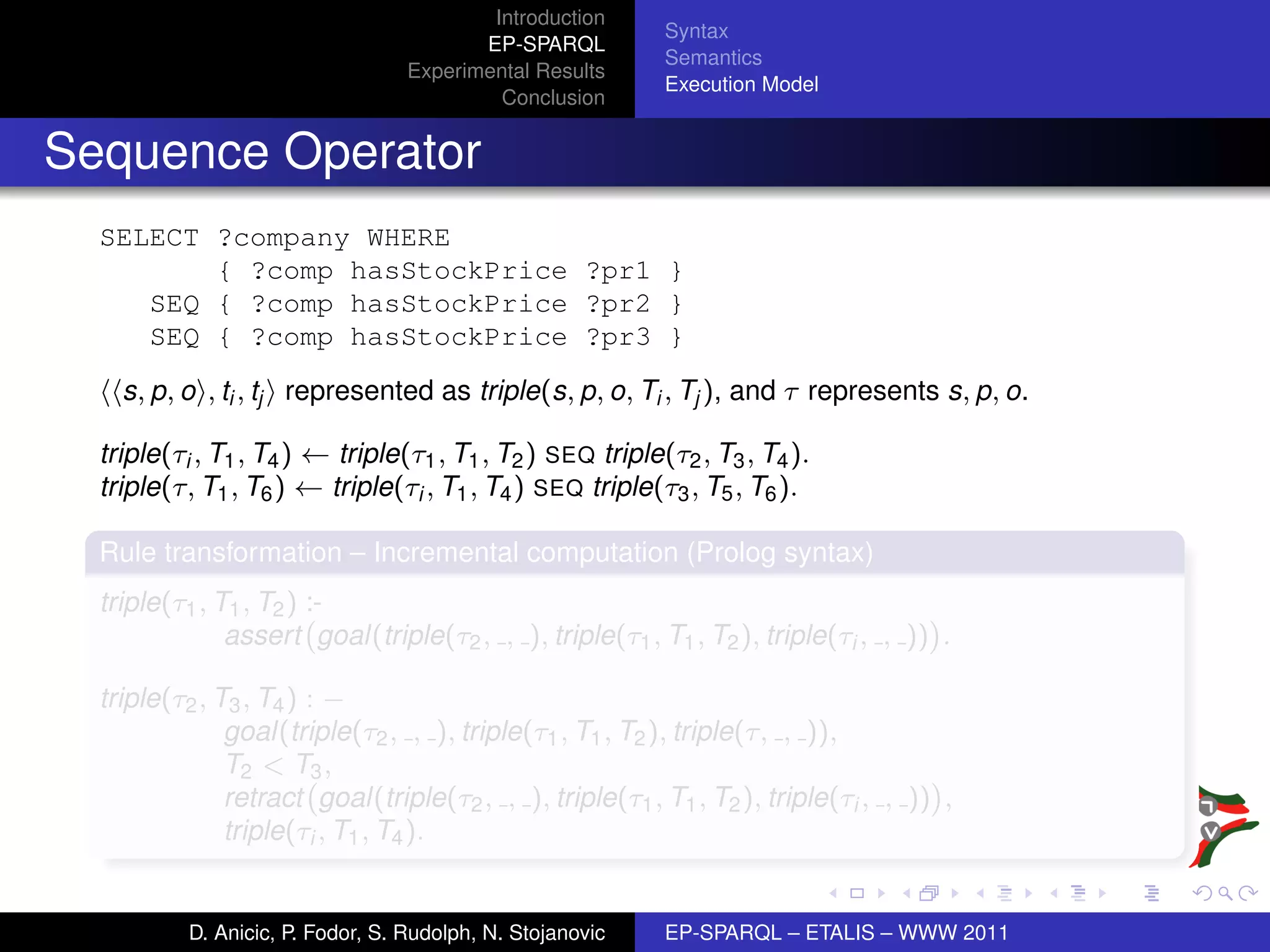
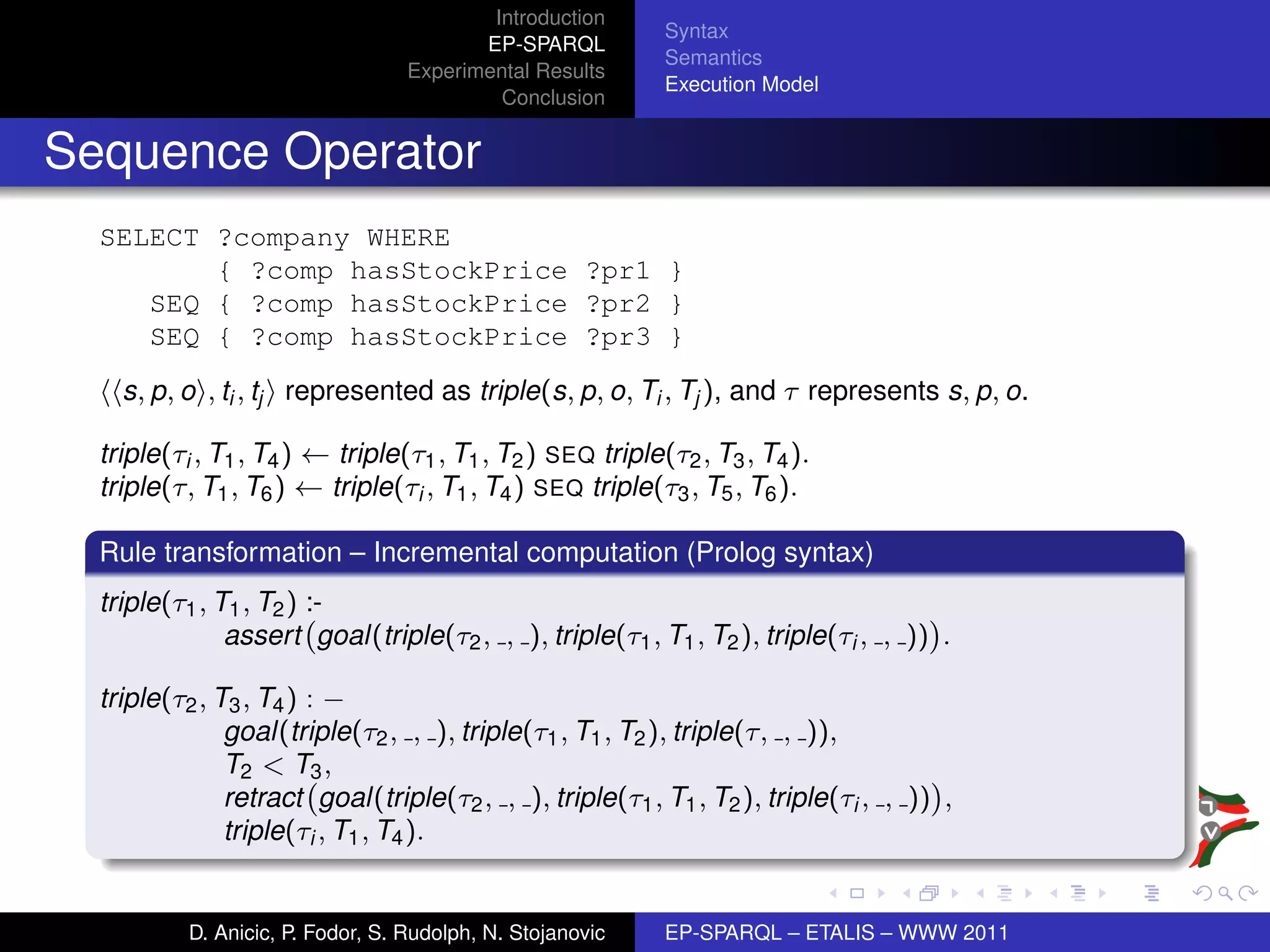
![Introduction
Syntax
EP-SPARQL
Semantics
Experimental Results
Execution Model
Conclusion
Other Operators
SELECT ?company WHERE
...
FILTER ( ?price2 < ?price1 * 0.7 &&
?price3 > ?price1 * 1.05)
FILTER – Rule transformation
condition(Price1, Price2, Price3) : −
P1 is (Price1 ∗ 0.7), P1 >Price2,
P2 is (Price1 ∗ 0.5), Price3>P2 .
EQUALS – Rule transformation
equals(TI1 , TI2 ) : −
TI1 = [TI1 S, TI1 E], validTimeInterval(TI1 ),
TI2 = [TI2 S, TI2 E], validTimeInterval(TI2 ),
TI1 S = TI2 S, TI1 E = TI2 E.
validTimeInterval(TI) ←
TI = [TI S, TI E], TI S@ < TI E.
D. Anicic, P. Fodor, S. Rudolph, N. Stojanovic EP-SPARQL – ETALIS – WWW 2011](https://image.slidesharecdn.com/www29-anicic-110404014908-phpapp02/75/EP-SPARQL-A-Unified-Language-for-Event-Processing-and-Stream-Reasoning-24-2048.jpg)
![Introduction
Syntax
EP-SPARQL
Semantics
Experimental Results
Execution Model
Conclusion
Other Operators
SELECT ?company WHERE
...
FILTER ( ?price2 < ?price1 * 0.7 &&
?price3 > ?price1 * 1.05)
FILTER – Rule transformation
condition(Price1, Price2, Price3) : −
P1 is (Price1 ∗ 0.7), P1 >Price2,
P2 is (Price1 ∗ 0.5), Price3>P2 .
EQUALS – Rule transformation
equals(TI1 , TI2 ) : −
TI1 = [TI1 S, TI1 E], validTimeInterval(TI1 ),
TI2 = [TI2 S, TI2 E], validTimeInterval(TI2 ),
TI1 S = TI2 S, TI1 E = TI2 E.
validTimeInterval(TI) ←
TI = [TI S, TI E], TI S@ < TI E.
D. Anicic, P. Fodor, S. Rudolph, N. Stojanovic EP-SPARQL – ETALIS – WWW 2011](https://image.slidesharecdn.com/www29-anicic-110404014908-phpapp02/75/EP-SPARQL-A-Unified-Language-for-Event-Processing-and-Stream-Reasoning-25-2048.jpg)
![Introduction
Syntax
EP-SPARQL
Semantics
Experimental Results
Execution Model
Conclusion
Other Operators
SELECT ?company WHERE
...
FILTER ( ?price2 < ?price1 * 0.7 &&
?price3 > ?price1 * 1.05)
FILTER – Rule transformation
condition(Price1, Price2, Price3) : −
P1 is (Price1 ∗ 0.7), P1 >Price2,
P2 is (Price1 ∗ 0.5), Price3>P2 .
EQUALS – Rule transformation
equals(TI1 , TI2 ) : −
TI1 = [TI1 S, TI1 E], validTimeInterval(TI1 ),
TI2 = [TI2 S, TI2 E], validTimeInterval(TI2 ),
TI1 S = TI2 S, TI1 E = TI2 E.
validTimeInterval(TI) ←
TI = [TI S, TI E], TI S@ < TI E.
D. Anicic, P. Fodor, S. Rudolph, N. Stojanovic EP-SPARQL – ETALIS – WWW 2011](https://image.slidesharecdn.com/www29-anicic-110404014908-phpapp02/75/EP-SPARQL-A-Unified-Language-for-Event-Processing-and-Stream-Reasoning-26-2048.jpg)
